Paul Finch's Blog, page 14
July 13, 2017
Hearts of darkness, both fictional and real
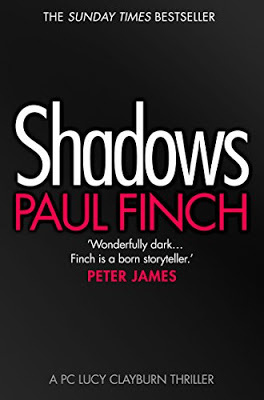 We’re talking gangsters this week, and by that I mean serious gangsters, nasty gangsters.
We’re talking gangsters this week, and by that I mean serious gangsters, nasty gangsters. Firstly, this is because I’ve now delivered my final copy-edit to HarperCollins for the next book in my Lucy Clayburn series, SHADOWS – and I even have a holding-jacket (left) to illustrate it – and gangsters, as you may know, are never far away when Lucy Clayburn’s on the case.
Secondly, it’s because this week I’ll also be reviewing and discussing Kevin Wignall’s excellent thriller, THE HUNTER’S PRAYER, which takes us along the periphery of organised crime rather than straight into the dark heart of it, and has some very intriguing and even moralistic things to say about the world of the contract killer.
Thirdly, when my last Heck novel, ASHES TO ASHES, was published, I wrote a guest-blog for the CRIMEBOOKJUNKIE website, in which I investigated the FIVE DEADLIEST CRIME SYNDICATES YOU MAY NEVER HAVE HEARD ABOUT. It appeared on the site on April 21 this year, and I’m now pleased to be reproducing it here (with one or two minor modifications to allow for the passage of time).
But more about that in a minute or two. For the time-being, back to Lucy ...
It’s difficult to talk about SHADOWS , and the heroine of the book, Lucy Clayburn, without giving away too many crucial spoilers about her own associations with the urban underworld. On the assumption that not everyone has at this stage read STRANGERS , my first Lucy Clayburn novel, I must therefore, by necessity, refrain from delving too deeply into the background of this tough lady cop from Manchester, though I still want to say a few things about the new book, which is due for publication on October 19 this year.
Since STRANGERS was published last spring, things have improved for Lucy Clayburn. In the first book, she was a uniformed copper in Crowley, Greater Manchester Police’s notorious November Division. She had a decade of service under her belt but was unlikely ever to get promoted (and in some parts of the job still invited ridicule) thanks to a major league foul-up several years earlier, which saw her kicked out of CID during her first week as a detective.
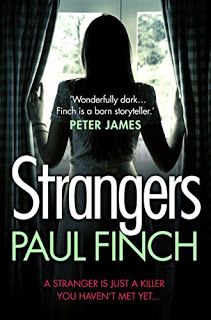 During the course of
STRANGERS
, many of these wrongs were naturally put right, and Lucy emerged at the end of it physically damaged but with her reputation massively enhanced. When
SHADOWS
starts, Lucy has resumed the role of detective constable and, though she’s only working Division, has continued to feel collars and impress people. She’s now regarded as one of divisional boss, DI Stan Beardmore’s best assets, and though she has been unwillingly partnered with the sloppy and outdated DC Harry Jepson, has regained all her old ambition. In particular, she has one eye on the elite Robbery Squad, who have relocated to Crowley from central Manchester, and are headed up by the legendary DI Kathy Blake and the fanciable DS Danny Tucker.
During the course of
STRANGERS
, many of these wrongs were naturally put right, and Lucy emerged at the end of it physically damaged but with her reputation massively enhanced. When
SHADOWS
starts, Lucy has resumed the role of detective constable and, though she’s only working Division, has continued to feel collars and impress people. She’s now regarded as one of divisional boss, DI Stan Beardmore’s best assets, and though she has been unwillingly partnered with the sloppy and outdated DC Harry Jepson, has regained all her old ambition. In particular, she has one eye on the elite Robbery Squad, who have relocated to Crowley from central Manchester, and are headed up by the legendary DI Kathy Blake and the fanciable DS Danny Tucker.But any road to advancement in this neck of the woods is going to be fraught with difficulty and danger. When a series of ultra-violent armed robberies commences, perpetrated by masked individuals wielding sub-machine guns (and not afraid to use them!), the scene is set for any copper in Crowley worth his/her salt to go out there and make a name for themselves. But there’s one problem with this. The unknown gang’s targets are exclusively underworld operations, and those mowed down by them are gangsters – so it’s only a matter of time before there is a massive and brutal retaliation …
And that’s it, sadly. If you want to know more, you’ve got to read the book. But don’t sweat; it’s not too far off. Just go and enjoy your holidays, and when you get home, it’ll only be a matter of weeks.
Lucy hits the shelves next October, and just to reiterate, the title of this next investigation is SHADOWS .
(And don’t get too attached to the jacket pictured above. As I said, it’s a holding-image, and will be replaced by the real one in due course; just watch this space).
*
And now, as promised, a fleeting glimpse into the infinitely more chilling world of real-life organised crime. Here, as it originally appeared on CRIMEBOOKJUNKIE, are:
THE FIVE DEADLIEST CRIME SYNDICATES YOU MAY NEVER HAVE HEARD ABOUT ...
Organised crime has been with us almost as long as we’ve had organised society.
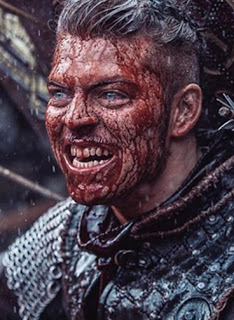 From the crime collegia (thieves’ guilds) of Ancient Rome to the Viking chieftains of the Dark Ages, who only held off raiding when they were paid generous protection money; from the robber barons of the high Middle Ages, who ‘taxed’ travellers, defied their king and waged bloody feuds against each other, to the pirates and corsairs of the Spanish Main … the scourge of gangsterdom has been around for as long as we have.
From the crime collegia (thieves’ guilds) of Ancient Rome to the Viking chieftains of the Dark Ages, who only held off raiding when they were paid generous protection money; from the robber barons of the high Middle Ages, who ‘taxed’ travellers, defied their king and waged bloody feuds against each other, to the pirates and corsairs of the Spanish Main … the scourge of gangsterdom has been around for as long as we have. Its root-causes are often to be found in resistance to a pre-existing form of oppression. The Cosa Nostra, for example, was born in the mid-19th century, when feudal landlords objected violently to the annexation of Sicily by mainland Italy; in the US today, the Aryan Brotherhood, a far-reaching white supremacist organisation which dominates the American prison system, came together initially in defence of whites incarcerated alongside black and Latino gang-members.
Not that any of this excuses these vicious cartels, or the heinous behaviour they indulge in.
Many modern crime syndicates attempt to put a polite face on their activities. In the 1960s, the Krays’ firm in East London organised charity events and donated to good causes. Many senior mob figures in North America deny the Mafia even exists, and insist on posing as legitimate businessmen. But the reality in most cases is bloody violence, primarily among the syndicates themselves as they fight for control of the rackets.
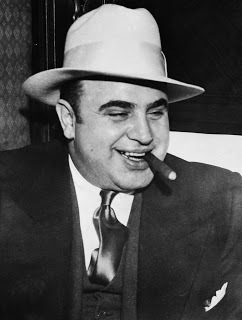 We, of course, in the world of crime writing, find them utterly fascinating. Even those of us who don’t write or read crime fiction, are often captivated by the near-romance of these dark, dangerous but often suave and charming rogues.
We, of course, in the world of crime writing, find them utterly fascinating. Even those of us who don’t write or read crime fiction, are often captivated by the near-romance of these dark, dangerous but often suave and charming rogues. The names of their leading lights are recognisable the world over: Al Capone, Bugsy Siegel, Lucky Luciano, Pablo Escobar. In some cases, they are almost admired. It is often said that Chicago bootlegger, Capone, was merely providing a popular service to a thirsty city. Britain’s Great Train Robbers (though not gangsters per se) attained folk-hero status because of the daring heist they pulled.
But again, the reality of organised crime is often pitiless brutality. Between 2007 and 2014, at the height of Mexico’s so-called Dope Wars, an estimated 164,000 people were murdered. In January this year, a battle between two imprisoned drugs gangs in Brazil’s Manaus jail left over 60 dead, including many who were found decapitated. Capone himself, seen almost as a gentleman by modern standards, didn’t just order the St Valentine’s Day Massacre in 1929, but was a former hit-man in his own right, and personally participated in the beating/shooting murders of three rivals.
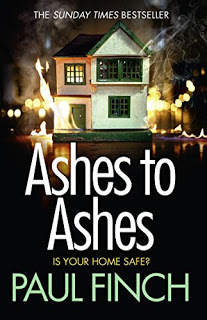 This kind of wild underworld warfare is very much the backdrop against which my most recent Heck novel,
ASHES TO ASHES
, is set. Though Heck is part of the Serial Crimes Unit, and primarily hunts lone killers, in this most recent book (published last April) he becomes involved in a horrific case at the centre of which a savage gangster war is being waged. In short, the bulk of the narcotics supply in the Northwest of England was once the sole fiefdom of Manchester kingpin, Vic Ship, but now a breakaway group under the leadership of a charismatic young gun, Lee Shaughnessy, is challenging his stranglehold on the post-industrial, drugs-dependent wasteland that is Bradburn (which lies midway between Manchester and Liverpool).
This kind of wild underworld warfare is very much the backdrop against which my most recent Heck novel,
ASHES TO ASHES
, is set. Though Heck is part of the Serial Crimes Unit, and primarily hunts lone killers, in this most recent book (published last April) he becomes involved in a horrific case at the centre of which a savage gangster war is being waged. In short, the bulk of the narcotics supply in the Northwest of England was once the sole fiefdom of Manchester kingpin, Vic Ship, but now a breakaway group under the leadership of a charismatic young gun, Lee Shaughnessy, is challenging his stranglehold on the post-industrial, drugs-dependent wasteland that is Bradburn (which lies midway between Manchester and Liverpool). What can only be described as hellish violence ensues, with a soaring body-count and some ghastly murder methods employed. To say more would be too much of a giveaway, but you don’t need to be a regular Heck reader to know that he throws himself headfirst into this blood-soaked chaos to try and get a result.
However, as ASHES TO ASHES - without doubt the most ‘gangstery’ of all my books - is still in the charts, and as I really don’t want to hit you with any more spoilers, I thought now might be an opportune time to look again at the real world of organised villainy, and pick out what I consider to be five of the deadliest crime syndicates operating today which you possibly don’t know about.
So, forget the Mafia (both the US and Italian versions), the Yakuza, the Triads, the Yardies. Here, in no particular order, are:
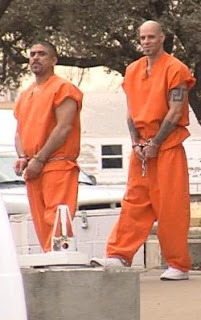 BARRIO AZTECA
BARRIO AZTECAOnce a prison gang, Barrio Azteca formed in El Paso in the 1980s, but have since made good in the cross-border drugs trade between Mexico and the US. Thanks to their unique geographic positioning, they are one of only very few transnational crime syndicates, members often holding both Mexican and US citizenship, which gives them a huge advantage over their drugs-smuggling rivals. They are also notoriously violent, and are responsible for dozens of killings on both sides of the border (though mainly in Ciudad Juárez, on the Mexican side) their preferred method being to beat and then burn to death their victims, sometimes in front of cheering crowds of gang-members. The group has been accused of carrying out full-scale massacres of rivals, by machine-gunning them to death in their prison cells (after being admitted by staff!), and on one occasion mowing down 16 innocent teenagers at a soccer party because ‘suspect characters’ were believed to be present.
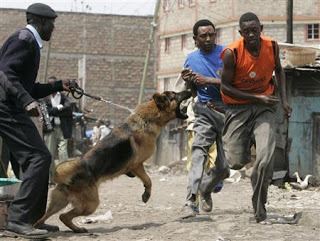 MUNGIKI
MUNGIKIA semi-religious organisation, Mungiki is seldom heard of outside its native Kenya, but inside the country they are a source of terror. With an anti-western ethos and strong indigenous African beliefs, they model themselves on the Mau Mau militia who resisted British colonial rule in the 1950s, but now are mostly known for organising crime in the slums of Nairobi, where protection racketeering and extortion of ordinary residents are their prime activities. Though considered by some to be on the wane, as recently as 2007 Mungiki sought to reinforce their authority with a wave of decapitations. In turn, Kenyan security forces have been accused of heavy-handedness in their response to Mungiki violence, and leaving many of the gangsters shot by the roadside. However, the counter-argument has been made that a large number of Mungiki deaths are just as likely to be the result of factional infighting among members, as they now believed to have split into rival camps.
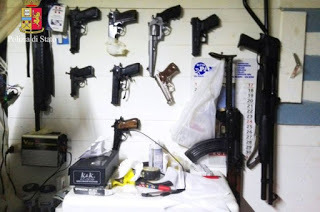 NDRANGHETA
NDRANGHETAOne of several southern Italian cartels – indeed, occasional allies of the Sicilian Mafia and the Neapolitan Camorra – the Ndrangheta of Calabria are fast emerging as one of the pre-eminent criminal organisations in the world. Having initially behaved like old style bandits, in the early days they used kidnapping and blackmail to finance contacts with Colombian coke cartels, but these links have since proved very lucrative, putting the syndicate firmly in the big league. In fact, they are now believed to be among the world’s most successful drugs traffickers and money launderers, with an estimated annual revenue of $50-60 billion, and are even suspected of financing political corruption and infiltrating public offices, and not just in southern Italy, but in the north as well. In fact, Ndrangheta influence is now felt beyond Italy, in Northern Europe, the USA and Australia, where, though they still peddle drugs, they have diversified into arms smuggling and human trafficking.
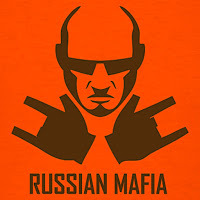 SOLNTSEVSKAYA BRATVA
SOLNTSEVSKAYA BRATVAPerhaps the dominant force in the terrifying world of the Russian Mafia. Moscow-based, and strictly adhering to the normal Russian gangster code that all members must engage in regular fitness and weapons training, in effect turning themselves into a spec-ops of the underworld, the Solntsevskaya, though controlled by a central committee, are organized into warlike brigades and these into smaller but very mobile and highly aggressive ‘wolf-packs’. As such, they have no compunction about challenging rival mobsters, and have successfully extended their arms and drugs-trafficking, money-laundering, assassination and general racketeering businesses into the US and the Caribbean. They have a particularly firm foothold in Atlanta, where they are said to have taken on various other established groups and defeated them in battle. American sources say they are in cahoots with Russia’s Federal Security Service, but this has not been proved.
LOS ZETAS
According to the US Government, Los Zetas are ‘the most technologically advanced, sophisticated, efficient, violent, ruthless, and dangerous cartel operating in Mexico’. An explanation for this can be found in their origins. During the 1990s, the group was formed by former special forces soldiers, who had deserted the Mexican Army looking for better pay. They found it working as muscle for the massive Gulf Cartel, and brought with them extreme mercilessness, but also high-tech weapons and the skills to use them. In 2010, again tired of taking orders, Los Zetas broke away to form their own syndicate. Despite internal instability, they are highly successful drugs traffickers, but are mainly notable for the staggering degree of violence they will use, having instigated numerous massacres of both rivals and civilians alike. Geographically, they are now the largest cartel in Mexico (controlling 11 states!), but their power extends far beyond their traditional homeland, both north and south.
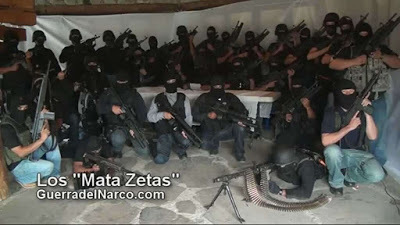
THRILLERS, CHILLERS, SHOCKERS AND KILLERS …
An ongoing series of reviews of dark fiction (crime, thriller and horror novels) – both old and new – that I have recently read and enjoyed. I’ll endeavour to keep the SPOILERS to a minimum; there will certainly be no given-away denouements or exposed twists-in-the-tail, but by the definition of the word ‘review’, I’m going to be talking about these books in more than just thumbnail detail, extolling the aspects that I particularly enjoyed … so I guess if you’d rather not know anything at all about these pieces of work in advance of reading them yourself, then these particular posts will not be your thing.
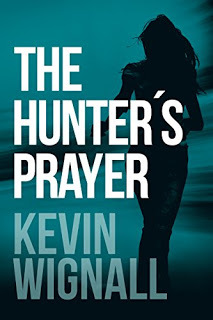 THE HUNTER’S PRAYER
THE HUNTER’S PRAYER
by Kevin Wignall (2015)
Carefree student Ella Hatto’s happy middle-class life ends horrifically one bright summer morning in Tuscany, where she’s on holiday with her boyfriend, Chris. First of all, back home in the UK, her father, mother and younger brother are murdered in their own home, executed by a skilled assassin. Next, she herself is targeted, caught up in a whirl of unexpected violence as a kill-team closes in on her, only to walk into a storm of bullets itself.
Unbeknown to Ella, a professional bodyguard called Lucas was hired by her successful businessman and part-time gangster father, and charged with shadowing her while she was abroad. Lucas, it seems, has stepped in at just the right moment, and gunned down the killers – but now he must whisk Ella and Chris away before the law arrives and starts asking awkward questions.
The two students are shaken to the core as their unlikely guardian moves them from one safehouse to the next, constantly trying to elude both the police and any further gunmen who might still be on their tail.
In due course, he finds sanctuary for them in the very last place he would normally have chosen: his own isolated and rather spartan villa in the foothills of the Swiss Alps.
As a former contract killer-turned-protector, Lucas is already a far cry from other characters of this ilk whom we may have encountered in different crime novels. He’s good at what he does, but he’s not cold-blooded about it. There is no granite hardness in Lucas, no pitilessness, no icy indifference to the pain of others. Okay, he’s not an especially warm character … but he does start warming to Ella. While Chris is simply frightened and increasingly resentful that he’s been dragged into this disaster, Ella – the real victim, who lost her family (whereas Chris merely lost his holiday!) – handles it better. She’s obviously grief-stricken, but she’s so innocent, so polite and yet at the same time so grown up in the way she deals with her terrible bereavement that Lucas can’t help but admire her and even be influenced by her.
The truth is that this ex-hitman is already, in a way, on the road to redemption. Though he’s still immersed in his murky world – he remains friendly, for example, with another much more callous killer, the likeable and yet utterly ruthless Dan Borowski – he basically wants out. He’s much happier to be a bodyguard than an assassin, but even then, his attempts to save the two youngsters take him far beyond the call of duty, a dedication to preserving their lives which stems not so much from his conscience, perhaps, but from a burgeoning desire to improve himself, a yearning to rejoin the civilised world (which gradual change of heart has already seen him develop an interest in the arts and literature).
Partly, this is down to his own domestic circumstances. His French girlfriend Madeleine, the one genuine love of his life, ditched him a decade and a half ago when she discovered what he did for a living, and ever since has denied him access to their daughter, Isabelle, who is now in her mid-teens; Lucas strongly desires to re-acquaint with the child, and can only hope and pray that she has grown up to be as balanced and sensible as Ella.
And yet here lies the deep irony in this unexpectedly philosophical story, because while Lucas’s initial interactions with Ella have encouraged him to reconnect with his estranged family, Ella is headed the other way.
Once safe in the care of her Uncle Simon, she becomes heir not just to her father’s wealth, but also to all his business dealings, even the nefarious ones, and as she works her way through them, trying to fathom out the identities of those who wanted her family dead, her grief transforms into slow-building rage, which, given that she’s now wealthy, no longer feels impotent. Very quickly, her attempts to rebuild her shattered world morph into an obsessive pursuit of revenge …
The Hunter’s Prayer – a revised version of For the Dogs (first published in 2004) – is not simply a murder mystery or an action thriller. If anything, it’s more of a parable. A metaphorical journey, if you like, into the ultimate futility of vengeance, and at the same time a lamentation at how salvation for some often seems to come at the price of damnation for others.
Unfortunately, I can’t discuss the unfolding narrative in too much detail for fear of giving away some quite remarkable twists in the second and third acts. Suffice to say that Kevin Wignall has done it again. The master of the thoughtful crime thriller presents us here with yet another potential high-octane scenario, and though he delivers the action plentifully, he asks questions of the reader throughout, even if only at a subliminal level.
You can tell where his real interests lie, because though we’re in the world of contract killers and organised crime here, we don’t go into huge detail about the criminal networks and illegal operations that provide the background to that. Nor do we investigate the creation of the hitmen themselves, neither assessing their warped psychology nor plumbing the hellish personal experiences that first put them into this line of work and equipped them with the necessary skills. Instead, the author is more focussed in the personalities of all his central characters as they stand now, their current mindsets, how they lead their everyday lives.
For example, we watch his hitmen blend easily into the rest of society when it suits them, we watch them go home at night and relax, we see them try to maintain their own codes of ethics even when they’re out on the job, and yet at the same time we’re acutely aware of the coping mechanisms they’ve needed to develop into order to endure the isolation of this strange, stilted existence; we recognise that they live on a mental knife-edge.
Lucas is to the forefront of this, not just because he’s the novel’s antihero, but because he’s actively undergoing change. It’s not that he’s necessarily sickened by the killing, it’s just that he’s tired of being an outsider, and when he encounters a genuinely pure person, who certainly looks as if she had a stable and promising life ahead of her, he is galvanised into fighting his way back to normality. This is certainly a cause we can root for, because we never feel that Lucas is actually evil. We can see that he’s damaged and alone, and though he’s done bad things, he’s done brave things too, so we want him on the side of right.
Much more of a challenge is the novel’s other main thread: the disintegration of Ella Hatto’s soul.
From the sweet child we met at the start of the book, she goes on to do horrible things – and again, Wignall, who remains non-judgemental throughout, wonders where we stand on this. Do we at least understand it, even if we don’t sympathise?
She’s suffered appallingly, and because of her innocent nature, only slowly does she come to realise what the massacre of her family actually means: someone she’s never even met (she assumes!) harboured such hatred of she and her people that they made a determined and expensive effort to have them all eliminated. So, is it surprising that, even in the light of her newly acquired wealth – because, and it’s hugely ironic, Ella has gained more financially from this atrocity than anyone else! – she now feels that her life has been ruined? How can she enjoy such wealth? How can she rest while this terrible offence against the Hatto name remains unanswered? And while Lucas has never encouraged this kind of thinking, she’s seen him in action; she now knows how effective a ruthless attitude can be – if you can finally right all wrongs (at least in your own mind) quickly and neatly, without waiting on the wheels of justice, which grind slowly at the best of times but you just know are not going to turn in your favour at all on this occasion, aren’t you justified in doing it?
It’s an interesting question. But another one would be – and again, the author asks us this – just how much leeway should a bad experience give you? Can it really forgive or even explain the complete erosion of all human feeling? And just because you’ve given up on the prescribed concept of right and wrong, and in fact have invented your own, does that mean the original concept no longer exists? Does that mean there’ll be no consequences? Don’t bank on it.
Be under no illusion, The Hunter’s Prayer is a very, very dark novel. But at 210 pages it’s a slim volume too, clearly and concisely written, and as such, it provides a quick, tense read, which, while it wouldn’t be true to call it enoyable - certainly not near the end, at which point it becomes utterly horrific - is more than a little bit thought-provoking.
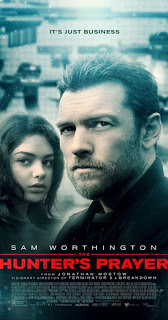 As
The Hunter’s Prayer
has already been filmed – it was only released in the US last month – starring Sam Worthington and Odeya Rush – it makes another of my usual ‘this is how I would cast it’ interludes redundant. Suffice to say, I’m glad it made the big screen and am keen to see how it adapts.
As
The Hunter’s Prayer
has already been filmed – it was only released in the US last month – starring Sam Worthington and Odeya Rush – it makes another of my usual ‘this is how I would cast it’ interludes redundant. Suffice to say, I’m glad it made the big screen and am keen to see how it adapts.Many thanks to all the various sources who’ve provided today’s images. They are, from the top down: Shadows (the holding-jacket only); Strangers; Ivar the Boneless, the most savage of all Viking warlords, as portrayed by Alex Hogh Anderson in the excellent TV series, Vikings; Al Capone; Ashes to Ashes; Barrio Azteca members on trial, pic by NewsWest9; Mungiki suspects menaced by police dogs, pic by Antony Njuguna; an Ndrangheta weapons stash, pic by AP; this one speaks for itself, pic from Voices from Russia; the Zetas, pic from mySA (San Antonio news); The Hunter’s Prayer - in book form; and in movie form.
Published on July 13, 2017 07:47
June 27, 2017
Following in the footsteps of a true legend
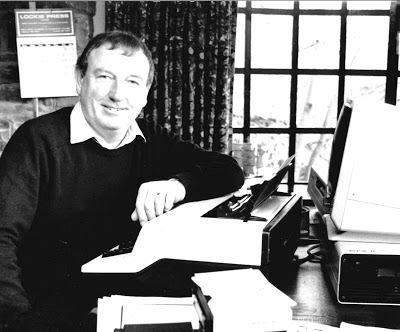
I hope you don’t mind me adopting a bit of a personal tone this week. But today is the tenth anniversary of my late father, Brian’s death, and I just want to take the opportunity to honour his memory with a quick retrospective on a life well-lived.
If you’ve tuned in for my review of Michael Moorcock’s sci-fi/horror classic, THE BLACK CORRIDOR, never fear – as usual, you’ll find it towards the end of this post. Though I chose that one specifically for today, as Moorcock was one of so many great authors that my father put me onto.
In fact, when you get down there, check out the amazing cover-image. That was one of many startling book jackets which, when I was knee-high to a grasshopper, I first saw on my father’s shelves, and which intrigued me so much that, when I was finally old enough, I had no real choice other than to investigate the world of dark and mysterious fiction.
Before we get into that, though, a few quick words about my Dad ...
James Brian Finch (pictured above in the 1980s) passed away 10 years ago today, after battling a long and debilitating illness. He was only 70 years old, which I’m sure most of us would agree is no great age these days. But the things he achieved in his life cannot be estimated in a few short sentences.
Though a descendent of Charles Dickens, he was of relatively humble origins, born the son of a coal-miner in Wigan in the 1930s, at the very time when George Orwell was still plodding its sooty, cobbled streets. This was a dour time and place, and hardly conducive to personal ambition. As such, with nothing to boast about in terms of school qualifications, he grew to young manhood after a what could only be construed as an unremarkable early life.
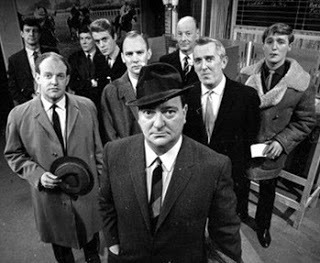 However, it was during his time in the military when he became interested in drama, writing routines and performing songs and comedy sketches for a concert party in the RAF. Though on returning to Civie Street, he secured regular work as a journalist and press officer, he remained fascinated by the stage and screen, making his first TV sale to The Wednesday Play in 1966, and then contributing episodes of Z Cars (pictured) and Coronation Street, finally becoming one of the latter show’s leading writers, penning over 150 scripts during the 1970s and 1980s, but at the same time branching out across the entire spectrum of British television.
However, it was during his time in the military when he became interested in drama, writing routines and performing songs and comedy sketches for a concert party in the RAF. Though on returning to Civie Street, he secured regular work as a journalist and press officer, he remained fascinated by the stage and screen, making his first TV sale to The Wednesday Play in 1966, and then contributing episodes of Z Cars (pictured) and Coronation Street, finally becoming one of the latter show’s leading writers, penning over 150 scripts during the 1970s and 1980s, but at the same time branching out across the entire spectrum of British television.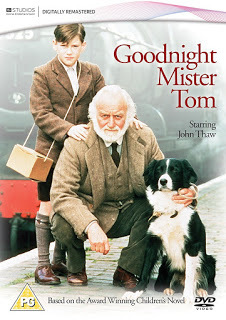 Probably one of the most successful screenwriters of his generation, my Dad’s career eventually came to span four decades, and saw him writing for an astonishing array of popular and ground-breaking TV, hitting every kind of genre and subgenre there was.
Probably one of the most successful screenwriters of his generation, my Dad’s career eventually came to span four decades, and saw him writing for an astonishing array of popular and ground-breaking TV, hitting every kind of genre and subgenre there was. The many, many programmes he wrote for included The Tomorrow People, General Hospital, The Brothers, Public Eye, Hunter’s Walk, The Chinese Puzzle, The Squirrels, Bergerac, Juliet Bravo, The Gentle Touch, Hetty Wainthrop Investigates, Heartbeat, The Bill, and All Creatures Great and Small.
 In the end, it all culminated in his winning a BAFTA in 1998 for his TV adaptation of Michelle Magorian’s Goodnight Mr Tom, though the picture right was taken a year or so after that latter event, when I won the British Fantasy Award for my first short story collection, Aftershocks, and we thought we’d compare our gongs.
In the end, it all culminated in his winning a BAFTA in 1998 for his TV adaptation of Michelle Magorian’s Goodnight Mr Tom, though the picture right was taken a year or so after that latter event, when I won the British Fantasy Award for my first short story collection, Aftershocks, and we thought we’d compare our gongs.(Apologies about the mullet – my Dad, as you can see, always kept his hair sensibly short).
But it was quite a world that my Mum, my three sisters and I experienced. All the latest and juiciest TV gossip was aired around the kitchen table. It wasn’t unusual to pick up the phone in our house, and find Frankie Howerd on the other end of it, or John Thaw, or Robert Hardy.
Dad was the most astounding inspiration for all kinds of reasons. Though he’d left school with few grades, he’d made up for that over the years by self-educating, which meant that I grew up in a home where enquiry was always good, learning was prized, art and civilisation were hugely appreciated, and where a constant stream of books, films and plays were recommended to me. And it wasn’t just the darker material that I’d go on to make my own career in – though Dad was a big fan of that stuff – but also the classics of our age.
Stratford-upon-Avon became our second home. It was one of my Dad’s favourite places, and more times than I can count, he took us there to watch some of the greatest plays ever written performed at the highest level.
Is it inevitable that I always sought to emulate him, that he was, quite literally, everything I wanted to be? I’m certainly grateful that he lived long enough to see my early output as a professional – my own episodes of The Bill (shortly after I left the police for real), my various stories as they appeared in anthologies and magazines, and the stage production of a radio play I wrote in 1991 called Cross and Fire. Alas, he wasn’t around when what I classify as my real success – my cop thrillers, the Heck and Clayburn novels – came along. But at least I managed to get two shared credits with Dad, even though they came after we’d lost him.
In 2008, a year after he died, I wrote a horror novella, Gingerbread, from an outline he himself had penned two decades earlier for a TV thriller which never got made (I think the series it was originally proposed for was Hammer House of Horror), and it was published by Pendragon Press. I was delighted to finally see it in print, and even more so to see mine and Dad’s names together on the by-line (many thanks to Chris Teague for getting it out in time for Fantasycon, that year).
A slightly bigger deal than this came with the 2010 full-cast audio Dr Who drama, Leviathan, which I wrote for Big Finish. It was part of the ‘Lost Stories’ series and I adapted it for audio from a Dr Who serial of the same name, which my Dad wrote in 1984 – it had reached the rehearsal stage back then, but was finally hacked from the schedule as it was deemed too expensive for production.
There is a cute little story connected with Leviathan, if you’ve got half a second ...
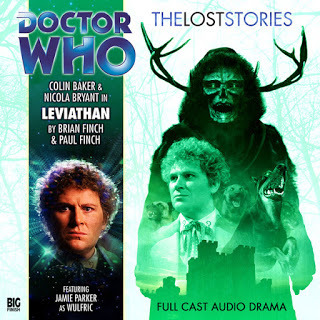 My writing career was at a really low ebb in 2009; The Bill was several years behind me, and Heck was still far in the future. I hadn’t earned much for two or three years. When I found out that Big Finish were looking for the Lost Stories – i.e. Dr Who serials that almost got made for TV, but for various reasons weren’t – I offered it to them on the condition that I could be the one to write it.
My writing career was at a really low ebb in 2009; The Bill was several years behind me, and Heck was still far in the future. I hadn’t earned much for two or three years. When I found out that Big Finish were looking for the Lost Stories – i.e. Dr Who serials that almost got made for TV, but for various reasons weren’t – I offered it to them on the condition that I could be the one to write it. The problem then was that I couldn’t find the original script anywhere.
I turned my Mum’s house upside-down and we uncovered scripts from every era it seemed, but there was no trace of Leviathan. I knew I’d seen it somewhere, but there was no sign of it when I needed it most, and obviously, if I couldn’t find it, I couldn’t proceed with the deal. After several days, I was sitting in my office at home in near-despair, thinking I was going to have to send back word – when I suddenly spotted a buff folder on a bottom shelf, covered in dust. I don’t know what drew my eyes to it, but it struck me as odd that I had no clue what was inside there.
Tentatively, I dusted it off and opened it – and there it was, the original Leviathan by Brian Finch, yellowed and dog-eared with age, but minus only two of its pages.
The project went ahead as planned: I adapted it for Big Finish Audio, and everyone involved was fantastic, Colin Baker and Nicola Bryant going at it full tilt as I sat in a sound-proofed booth down at the Ladbroke Grove studio and enjoyed one of the proudest moments of my career. We got a great Dr Who product out, which did very well in the shops – and yes, I again got that all-important shared credit with my Dad.
The really uplifting bit about that little episode, though, is that it somehow turned the tide in my career. Up until Leviathan, I’d struggled to make any kind of notable impact. Ever since Leviathan, things have gone ... well, let’s just say that I’ve never been happier professionally.
It’s yet another reason to thank my late-father, and another memory to add to a whole batch of joyful memories that he left for us.
 Yes, it’s now ten years since he passed, and though it’s true that you never get used to losing a cherished one, he left such a legacy of love, friendship, warmth and genuine, knowledgeable guidance – and of course that crucial inspiration for me – that I’ve never really felt as if he’s gone. I miss him achingly. Who wouldn’t? But he was such a great guy, who made such an enormous impact on the lives of all those who met him that I’m cosy in the sense that he’s still somewhere close by, and feel confident that his benign presence will never, ever fade.
Yes, it’s now ten years since he passed, and though it’s true that you never get used to losing a cherished one, he left such a legacy of love, friendship, warmth and genuine, knowledgeable guidance – and of course that crucial inspiration for me – that I’ve never really felt as if he’s gone. I miss him achingly. Who wouldn’t? But he was such a great guy, who made such an enormous impact on the lives of all those who met him that I’m cosy in the sense that he’s still somewhere close by, and feel confident that his benign presence will never, ever fade.(Many thanks to the local press, I assume the Wigan Evening Post, for the great picture at the top. Sorry guys, I’m not sure which particular snapper took this one, as it was an awful long time ago, so the credit goes to all of you).
THRILLERS, CHILLERS, SHOCKERS AND KILLERS …
An ongoing series of reviews of dark fiction (crime, thriller and horror novels) – both old and new – that I have recently read and enjoyed. I’ll endeavour to keep the SPOILERS to a minimum; there will certainly be no given-away denouements or exposed twists-in-the-tail, but by the definition of the word ‘review’, I’m going to be talking about these books in more than just thumbnail detail, extolling the aspects that I particularly enjoyed … so I guess if you’d rather not know anything at all about these pieces of work in advance of reading them yourself, then these particular posts will not be your thing.
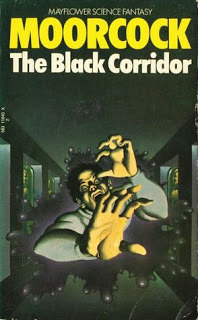 THE BLACK CORRIDOR
THE BLACK CORRIDOR
by Michael Moorcock (1969)
In a future of violence and decay, uncompromising businessman, Ryan, foresees no hope either for himself or for his family. In the midst of social disintegration, societal breakdown, ecological disaster and the impending slaughter of a nuclear war, and with all his close relationships – both personal and business-related – severed, he finds he has no option but to steal an interstellar spaceship, the Hope Dempsey, load it with the handful of people left on Earth whom he actually cares about, and set off for Munich 15040, a habitable world in the constellation of Ophiuchus.
The journey is a short one in cosmic terms – a mere six light-years – but it’s a massive undertaking for human beings. Even so, under his stewardship, Ryan feels they can make it. Once safely landed on their new home, he is confident they’ll be able to start again, get back to basics, live a simple, clean life, and in the process reformat humanity.
At least that’s the plan, but in reality it isn’t going to be anything like so easy.
In The Black Corridor (which term actually refers to space itself), once you’re out there among the stars there is no sense of the wonder and mystery that science fiction readers of earlier decades had been led to imagine. Instead, it is a cold, dead void, a soulless vacuum in which the chances of dying an ugly, lonely death are very high indeed – and in fact this is the note we come in on as the novel starts. Check out this immortal opening passage:
Space is infinite. It is dark. Space is neutral. It is cold.*Stars occupy minute areas of space. They are clustered a few billion here. A few billion there. As if seeking consolation in numbers. Space does not care.*Space does not threaten. Space does not comfort. It does not sleep; it does not wake; it does not dream; it does not hope; it does not fear; it does not love; it does not hate; it does not encourage any of these qualities. Space cannot be measured. It cannot be angered. It cannot be placated. It cannot be summed up. Space is there.*Space is not large and it is not small. It does not live and it does not die. It does not offer truth and neither does it lie. Space is a remorseless, senseless, impersonal fact. Space is the absence of time and of matter.
(If you feel you recognise that extract from the annals of rock music, you’re correct – it was utilised on Hawkwind’s classic 1973 album, Space Ritual ).
The voyage itself is a nightmarish experience. With the rest of his crew in cryogenic stasis, Ryan alone must run the ship, check the computers, continue to monitor their course, and all the while he talks to no-one but the spaceship’s log, and, outside, sees nothing but the vast and frozen emptiness. Inevitably, his mind begins to wander and, whether he likes it or not, he commences reliving, in vivid flashback, the terrible events on Earth leading up to their departure, at the same time mulling over his own achievements, or the lack of such. For Ryan, it seems, is not a particularly nice guy. It may be that now he heroically leads his suffering people to a kind of promised land, but during his time on Earth he was ruthless, unprincipled, vain and deceitful. Wherever he went, he left damage.
The memories of this torture him unmercifully, but no more so than the sheer, mind-boggling solitude of his limitless journey. Eventually he begins to hallucinate, to fantasise … quickly losing track of what is real and what isn’t, and at the same time infecting the reader with similar doubts.
Did any of these events that Ryan flees from actually happen?
Who is Ryan?
Why is he here on this seemingly deserted spacecraft?
Where is he really headed to? Does that place exist?
And perhaps more frightening still, is it possible that he isn’t genuinely alone? Could there be someone else on board, someone who seemingly is not lying in suspended animation? Ryan certainly finds evidence of this, but who could this interloper be, why does Ryan never see them, and what is their purpose?
You just know, without needing to be told, that none of this is going to end well …
The most obvious thing you can say about The Black Corridor , which is only 126 pages in length, (and unofficially was co-written by Moorcock with his then-wife, Hilary Bailey) is that it was intended as a short, sharp shock to the blasé sci-fi buying public of that era.
It’s a classic example of the ‘new wave’ subgenre popular at the end of the 1960s in that it prophesied a dystopian future of warring, hate-filled tribes rather than an age of technological imperiousness; in that it was written in a consciously stripped-down style; in that it used ripe language and was frank in its depictions of human violence and sexuality – but also in that it was political (even anarchic) in its subtext and scathing about mankind’s reckless mismanagement of the Earth.
But don’t go away with the impression that this novel is an essay or a polemic. It’s certainly experimental in parts. There is curious and often distracting use of ‘alternative’ typography, and there are sections when we are subjected to technical printouts and random streams of consciousness rather than coherent narrative, but despite these tricks – which are a bit irritating, if I’m honest – this is still a rattling good tale, especially if you like your fiction off-the-wall.
Just be warned – there are no space monsters in this novel, no ray-guns. Though that doesn’t mean it isn’t eerie and fascinating, not to say on occasion pretty damn frightening. The growing sense of menace stems entirely from Ryan’s rapidly worsening predicament: the endless isolation of his headlong flight, the uncertainty of what might lie at its end, if anything, and his gradual but inevitable meltdown, which of course perfectly mirrors the meltdown back on Earth, for that too was fermented by ignorance and folly.
Some have accused The Black Corridor of dating badly, of being a typical exercise in ’60s psychedelia and laced with the sort of woolly-headed hippy-think we’d these days scoff at as pseudery. But on reflection, it actually seems rather prescient in today’s volatile climate: world economies collapsing, old alliances breaking, friends becoming enemies, suspicion growing about immigrants and foreigners, fear and paranoia running rampant in the land.
It’s also been said that it’s too slim, too quick a read, and for that reason a bit lightweight in sci-fi terms. Personally, I couldn’t disagree more. If a book does its job in 100 pages rather than 1,000, it’s still done its job. And at least you can’t complain that it’s been padded.
As always – just for fun – here are my selections for who should play the leads if The Black Corridor ever makes it to the movie or TV screen (and what a fascinating challenge for any screenwriter that would be), but as there’s only one real star of this story, I’m only bothering to cast one person, and for that I’m opting for my main man of the moment.
Ryan – Tom Hardy
Published on June 27, 2017 01:55
June 16, 2017
When our favourite heroes face true peril
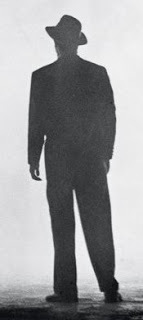
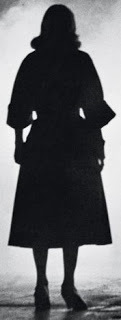 It’s a big news week this week, at least for those interested in the respective futures of Detective Sergeant Mark ‘Heck’ Heckenburg and Detective Constable Lucy Clayburn.
It’s a big news week this week, at least for those interested in the respective futures of Detective Sergeant Mark ‘Heck’ Heckenburg and Detective Constable Lucy Clayburn. Before we get to that, and on the subject of cops under pressure in a very dark world, I’m also proud today to be reviewing and discussing David Jackson’s superbly entertaining, New York-based crime thriller, PARIAH. If that feature is the main reason you’re here, you’ll find it, as usual, at the lower end of today’s column – feel free to scroll your way down there now.
However, if you’ve got a bit more time and are fans of the Heckenburg and Clayburn books, you might be a bit interested in the following …
The weeks leading up to Christmas are usually pretty exciting, but as we raced towards the end of 2016, I was a bit more excited (and tense) than usual. In early November last year, I entered discussions with my publishers, Avon Books at HarperCollins, to maybe continue the two crime sagas I’ve recently been writing: the DS Heckenburg novels, and what, as most punters will have now guessed, was always intended to be a parallel crime series, the Lucy Clayburn books.
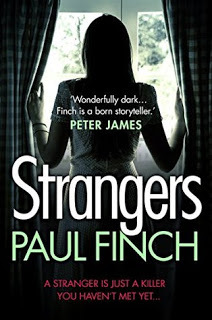 It may be a surprise to some that I had to discuss it at all. After all,
STRANGERS
, the first of the Clayburn novels, became a Sunday Times best-seller within a month of publication, while the Heck novels, particularly the most recent one,
ASHES TO ASHES
, have pulled in some astonishingly good reviews.
It may be a surprise to some that I had to discuss it at all. After all,
STRANGERS
, the first of the Clayburn novels, became a Sunday Times best-seller within a month of publication, while the Heck novels, particularly the most recent one,
ASHES TO ASHES
, have pulled in some astonishingly good reviews.But we authors don’t glue ourselves permanently to any particular character or series of characters, no matter how popular they may become. At least, we don’t plan to. Okay, I can’t speak for everyone in this … but I think it’s fair to say that we all of us have ambitions to broaden our writerly horizons. We don’t want to write about the same people all the time.
Hence the long chat I had with Avon.
It’s always a strange time for an author, that. Because even if you’ve enjoyed a happy and fruitful relationship with a publisher – as I definitely had with Avon, particularly with regard to the Heck and Clayburn books – you can’t help but question whether the grass might be greener elsewhere. You swap notes with fellow writers, you start mulling over different ideas, possible new directions, you discuss it with your agent, your wife, husband etc.
But ultimately, you wonder ...
You wonder if you’ve been in your comfort zone for too long, and if maybe your work has stagnated as a result.
You wonder if opting to write something completely different might totally re-energise you.
 However … if you guys are all reading this now and assuming I’m about to declare that I’m either leaving Avon Books and/or dumping my two cop heroes, you’d be wrong. In fact, it’s quite the opposite.
However … if you guys are all reading this now and assuming I’m about to declare that I’m either leaving Avon Books and/or dumping my two cop heroes, you’d be wrong. In fact, it’s quite the opposite.I’m very happy to announce that, after all the soul-searching I mentioned above, I’ve signed a new deal with Avon, and that both Heck and Lucy Clayburn will continue to work their cases harder than almost anyone else into the foreseeable future under the HarperCollins banner.
As such, another Lucy book – SHADOWS – will follow this year (in October, to be precise), the next Heck novel, as yet untitled, will hit the shelves sometime around next spring, and Lucy, most likely, will appear again later on in 2018.
You may wonder, ‘okay, so … why give us all that gabble beforehand?’
The simple answer is that lots of people have recently been asking what my plans are for the two characters, and have expressed concern that I seemed cagey or even unsure about what was going to happen next. The truth is that I wasn’t really able to say anything because I was genuinely undecided – it was, as I think I’ve underlined, a difficult decision.
But at the end of the day, I suspect I was always destined to sign on at Avon again. Firstly, they’ve done a great job with the novels so far, and have encouraged, supported and assisted me in every conceivable way as I’ve developed my two main characters. I’ve long felt I had something valuable in my connection to Avon – a relationship that more resembles close friendship than employer and employee hooked-up for mutual convenience, and this is something which, from my many chats with fellow authors, is not by any means a given when you move on to pastures new. If I’d decided to head elsewhere, I’d have been risking losing something very precious.
In addition, of course, I still have a directory’s worth of untapped ideas for both Heck and Lucy, and, quite frankly, it would have been an out-and-out crime to leave it there. Not only that, I’ve realised these last few months how emotionally attached I’ve become to these two fictional personalities – every day, it seems, I’m thinking up possible new developments in their careers. Merely considering drawing a sudden line under them actually affected me with a sense of physical loss.
So there we are: I’m still with Avon Books, at least for another couple of books, and, as I said before, both Mark Heckenburg and Lucy Clayburn will continue to hunt the bad guys with every ounce of strength in my body.
And now for something completely (well, a little bit) different …
Last year, I wrote a special blogpost for BLOOMIN BRILLIANT BOOKS on the subject of my research techniques, and what lengths I must go to in order to create the authentic feel of the homicide detective’s world. That was half a year ago now, of course, last October in fact, and so, with many thanks to BLOOMIN BRILLIANT BOOKS – and hopefully for your interest – I’m able to reproduce it in full here, today …
How do you research for your cop fiction?
I suppose it all boils down to how much research you actually want to do.
Do you want to be as precise as possible and follow real police procedure to the absolute letter of the law? Or are you quite happy to cut corners in order to tell a rattling good story?
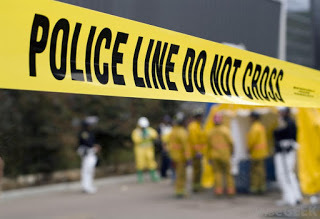 Either way, I have a slight advantage because I was once a serving police officer, albeit some time ago now. Given that police protocols change so regularly, and vary so much from force to force, my basic knowledge is hardly likely to be 100% accurate. That said, my service did ensure that I have a good basic understanding of police life, police attitudes, police relationships, and I like to think that I’m fairly well informed when it comes to the law, though I too have to update my legal knowledge on a regular basis.
Either way, I have a slight advantage because I was once a serving police officer, albeit some time ago now. Given that police protocols change so regularly, and vary so much from force to force, my basic knowledge is hardly likely to be 100% accurate. That said, my service did ensure that I have a good basic understanding of police life, police attitudes, police relationships, and I like to think that I’m fairly well informed when it comes to the law, though I too have to update my legal knowledge on a regular basis.Thankfully, I still have some of my old crime investigation manuals to hand – very grubby and dog-eared though they are – and there are still lots of police buddies I can consult when it comes to tricky issues. In addition these days, we all have an amazing resource of information in the internet. Complex, detailed data that once could only be discovered by going to the library or visiting the local Citizen’s Advice office is now available at the push of a button. Law exists online, the rights of citizens are available online, police procedures at the time of arrest and custody are online – it’s not difficult to keep yourself appraised of essential developments.
Which brings me back to the point I raised earlier. How much hard fact to you want to include?
Some authors are very hot on procedure, while for others it’s nothing more than a vague background. I guess I fall somewhere between the two. I like things to be as accurate as possible, but by the same token I consider that I’m writing thriller fiction not police textbooks. So I don’t like to overdo it. But that doesn’t mean I don’t keep my ear to the ground and read up on new cases and systems, which can be a time-consuming process.
Of course, one key advantage the average crime writer has in this regard is the sheer amount of misinformation already out there. Most members of the public have never visited a real-life murder scene, and hopefully never will. Nevertheless, they think they know what goes on because they’ve seen it so often in the movies and on television. But most dramas operate on the same principles that we novelists do: in other words, their priority is not always to be absolutely faithful to real life, and they too will skimp on inconvenient details. In addition to this, there are some investigative techniques that official police advisers will not speak to writers, publishers or film and TV producers about, and I won’t even name them here. It definitely suits the police if not all the tricks of their trade are known to the public; there are some areas where they are more than happy for crime authors like myself to make stuff up.
With my last Lucy Clayburn novel, STRANGERS , there is no way that even as a former copper, I could just have grabbed up my keyboard and started bashing it in.
To start with, STRANGERS is about a policewoman, not a policeman. Not only that, it’s a policewoman who needs to go undercover among Manchester’s prostitutes to try and snare a vicious female serial killer called Jill the Ripper, a streetwalker who is murdering and mutilating her male clients.
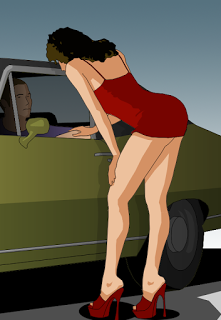 How could I know what it would be like as a young woman, who as part of her duty must don the most suggestive clothing and walk the roughest parts of town at the dead of night, while actively seeking the company of deranged offenders?
How could I know what it would be like as a young woman, who as part of her duty must don the most suggestive clothing and walk the roughest parts of town at the dead of night, while actively seeking the company of deranged offenders?But thankfully, I had this covered too. The author Ash Cameron, a personal friend of mine, is also a former police officer, and she performed this perilous duty many, many times during her own days in the job. So, I had more than a few discussions with her on the subject, and trust me, I got it chapter and verse, and you will too if you fancy checking out STRANGERS , in which I skimp on no lurid detail.
Even so, I reiterate that I’m not in the business of writing how-to manuals. On occasion, the mythology of police work is much more entertaining than the reality – how much do you really want to know about mountains of soul-sapping paperwork, or sitting in court for hours while lawyers argue over minutiae?
That doesn’t mean to say that the truth can’t every bit as compelling and hair-raising as the fiction. But for me it's about finding a happy medium midway between the two. I guess it’s over to my readers now to see what they make of it.
THRILLERS, CHILLERS, SHOCKERS AND KILLERS ...
An ongoing series of reviews of dark fiction (crime, thriller and horror novels) – both old and new – that I have recently read and enjoyed. I’ll endeavour to keep the SPOILERS to a minimum; there will certainly be no given-away denouements or exposed twists-in-the-tail, but by the definition of the word ‘review’, I’m going to be talking about these books in more than just thumbnail detail, extolling the aspects that I particularly enjoyed … so I guess if you’d rather not know anything at all about these pieces of work in advance of reading them yourself, then these particular posts will not be your thing.
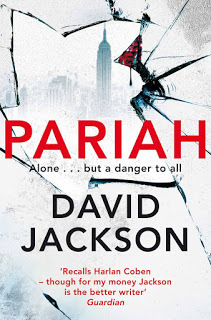 PARIAH
by David Jackson (2014)
PARIAH
by David Jackson (2014)
Detective Callum Doyle is one of New York’s finest. But he’s not the most popular guy in the station-house. Wrongly accused of once having an affair with a colleague’s wife, who subsequently died in a shoot-out with a worthless hoodlum, there is a distinct lack of support from his work-mates when a faceless and relentless killer targets him for isolation, eliminating anyone he gets close to in the most cruel and horrific ways.
The book starts at a hundred miles an hour with the slaying of two of Doyle’s fellow-cops, Detectives Parlatti and Alvarez, both of whom at the time of their deaths happen to be partnered with him. Letters are then sent threatening the lives of anyone Doyle has contact with – police personnel, family, friends and even those criminals he happens to be investigating.
Initially, the rest of the Detective Squad reacts the way you’d expect, showing determination to crack the case and bring the mysterious madman to justice. However, it soon becomes apparent that this calculating individual enjoys several big advantages over the NYPD and over Callum Doyle in particular.
To start with, he remains bewilderingly anonymous, carrying out his hits with ultra-professionalism, leaving not a clue for his pursuers to work with. He also – and this is the real butt-kicker for Doyle – seems constantly to be two or three steps ahead. It’s inexplicable, but the guy always appears to know exactly where Doyle is and who he’s interacting with, and as promised, he duly obliterates these unfortunates with extreme and elaborate viciousness.
Even Doyle’s most nefarious contacts, regular Internal Affairs opponent Paulsen, and washed-up former boxing pal-turned-informer, Mickey ‘Spinner’ Spinoza, find themselves in dire peril.
No-one, it seems – literally no-one – is safe.
Doyle is certain the answer lies in his own past. It’s just a matter of going through the files and trying to identify if there’s anyone who bears him this much ill will and who is capable of mounting such a campaign of terror. But increasingly, Doyle’s colleagues – especially those who were iffy about him from the start – are hesitant to assist. They’ve got lives to lead too, not to mention families whose welfare they fear for. In truth, Doyle has only one true friend in the department, Lieutenant Mo Franklin, heir to a wealthy estate and husband to the sexy Nadine, who has become a close pal of Doyle’s homely wife, Rachel – but now even Franklin has become concerned that his top detective is a danger to everyone, and so advises him to take an indefinite period of leave.
Doyle keeps working the case – of course he does; he’s no intention of playing this crazy game. But things get much tougher when the lunatic switches his attention to Doyle’s family (and in one instance in the most harrowing and heart-rending way).
In some ways, Doyle thinks it might be better if this nameless enemy was simply planning to kill him. Because what happens now is infinitely worse: a living death, permanent and complete separation from his fellow men. Doyle literally must bury himself in a roach-motel and sever all contact with the outside world. And how can he fight back in such a predicament? Even the underworld, having lost some of their own to the killer, hold him at arm’s length – with the exception of low-level Mafia hood, Sonny Rocca, who Doyle has had run-ins with before but whom he basically likes, and far more scarily, the Bartok brothers, two major players on the New York crime scene.
For reasons of their own, Rocca and the Bartoks are ready to help Doyle, though of course this kind of help only comes at the sort of price a good cop will struggle to pay. Just when he thought things couldn’t get any worse, Doyle now has this nightmare decision to make: does he give up his life as he knew it previously, or does he give up his soul? …
First and foremost, the most impressive thing about Pariah – at least as far as I’m concerned – is the authenticity with which it is written, especially given that David Jackson is a British writer. It completely captures the world of a busy New York City police precinct, with believable dialogue, convincing use of genuine procedures (some serious research on show there, Mr. Jackson!), non-intrusive but atmospheric use of real locations, and lots of the kind of rugged, hard-bitten grotesques you’d expect to meet on the mean streets of the Big Apple.
It’s to the author’s credit that so few likeable characters populate these pages: pimps, addicts, winos, bang-bangers. Not every punter has reviewed this aspect of the book favourably, arguing that it perhaps wallows a little too much in grimness, and that maybe a few nicer personalities would be refreshing. But it works excellently for me and shows that Jackson is determined to immerse us in a version of NYPD life which is as close as damn it to the real thing.
This brings me fully onto the issue of David Jackson’s characterisation, which in Pariah is razor-sharp from the outset, but also pretty merciless.
Far from the oft-depicted police world of white knights and unbreakable brotherhoods, it feels here as if Callum Doyle’s work-buddies let him down disappointingly quickly. Again, this is an effort by Jackson to reflect real life. Let’s face it, Doyle was a guy with baggage and not too many friends to start with, and this confirmed outsider status was never likely to endear him to his fellow cops when it started to look as if he’d suddenly become a walking bullet-magnet.
Doyle, for whom Pariah is the first of several no-holds-barred outings, makes for a traditional flawed hero, his background in boxing giving him ‘man’s man’ kudos, but the suspicion with which he’s held in by certain colleagues even before he’s become the object of the killer’s hatred understandably steers him towards the friendship of lowlife informers like Spinner, Sonny Rocca and even Mr. Unpopular himself, IA investigator Paulsen. Doyle’s a family man, of course, so his home life is comfortable, almost cosy, but then there is still that lingering doubt in the minds of so many who know him about whether he had an affair or not, and the mere presence of loved ones presents its own kinds of difficulties, especially with a ruthless psycho hanging around. So, it’s never cakes and ale for Callum Doyle, not even on the domestic front.
The rest of the cops are convincingly drawn; even good guys like Parlatti and Alvarez have issues, while one particular member of the Detective Squad, Schneider, is an out-and-out hate mobile, one of those archetypical fat-necked, loudmouthed, aggressively opinionated law enforcement bullies of the old school and very much the opposite number to Doyle’s fearless pursuer of genuine justice.
I was somewhat less sold on Mo Franklin. Not because he didn’t strike me as the real deal – in the workplace he certainly did, but his home life is perhaps a little too gold-plated. I had trouble buying into the huge inheritance, the big house and the kittenish wife. But that’s probably the only brickbat I’ve got for Pariah , and it certainly didn’t spoil my enjoyment of it.
This is a taut, fast-moving detective thriller, based on a singular and intriguing concept. When a cop is completely ostracised – when he literally has no access to any of his normal support networks, neither cop buddies, non-cop buddies, friends, loved ones, and certainly none of those basic departmental essentials like Forensics, Ballistics etc – how can he even start to track down so sadistic and yet sophisticated a maniac?
This is a truly great idea, very well executed, which screams to be adapted for film or TV. It also features some truly hair-raising moments – check out the scene in the nightclub alley! – which lift it well above the average police procedural, certainly in the action stakes, though it has its cerebral moments too; when Doyle is too weary and battered to keep on hitting the streets, he must fall back on that often most underused tool in detective fiction, his brain – though to talk much more about that would be a spoiler for sure.
Suffice to say that Pariah has my strongest recommendation. It’s a high-octane page-flipper, filled with unforeseen twists, which I defy anyone to get through in more than two or three sittings.
As always, at the end of these book reviews, I’m now going to be cheeky enough to indulge in some fantasy casting and list those actors I personally would pick were this novel ever to make it to the screen. Here, purely for fun you understand, are my selections for who should play the lead characters in Pariah:
Callum Doyle – Jude LawRachel Doyle – Jennifer EspositoMickey ‘Spinner’ Spinoza – Micky RourkeSonny Rocca – Michael ImperioliPaulsen – Robin Lord TaylorMo Franklin – John TurturroNadine Franklin – Sarah Michelle Gellar
(I know, this cast wouldn’t come cheap, but there’s never any point doing this if I haven’t got limitless funds to work with!!!).
Published on June 16, 2017 06:28
June 1, 2017
Villains beware ... these hunters never tire!
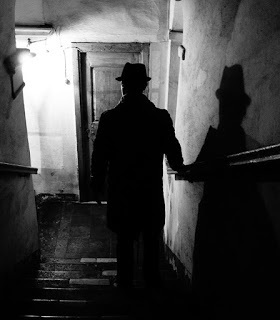 Today, we’re talking cop heroes who come back again and again … whether that be in book form, on TV, the cinema, or preferably all three!
Today, we’re talking cop heroes who come back again and again … whether that be in book form, on TV, the cinema, or preferably all three!We’re doing that first of all because I intend to wax lyrical about the TOP TEN TV COP SHOWS THAT HAVE MOST INFLUENCED MY CRIME WRITING, but also because I intend to review and discuss Michael Stanley’s fantastic Botswana-set cop thriller, DEADLY HARVEST, part of a crime investigation series which, more than almost any other I’ve encountered, illustrates the vast range of styles, tones and subject-matter available within the confines of this very special genre.
If you want to know more about that, though, you’ll have to head down towards the bottom of today’s post, where I review the book and discuss it in some detail. Before then, here as promised is a bit of lyrical waxing …
There are plenty of crime novelists whose heroes return for more. I think that all we crime authors enjoy that aspect of our job, particularly those of us who write from the POV of an investigator. It’s a genuine thrill to have created a hero or heroine who so connects with your readership that the clamour to see more of them rises and rises until it cannot be ignored … especially when the net-result is that you finish up with your own cop thriller franchise.
This isn’t just a big thumbs-up for the work you’ve done, and hugely gratifying for that reason alone, it also opens the whole thing up into a more exciting field, allowing you to develop your central character on an episodic basis, throwing more and more challenges at him/her, confronting them with an ever wider variety and multiplicity of threats, and learning more about them, yourself, as you progress.
Strangely, though … whereas for the writers this is usually the desired outcome (often an ambition rather than a certainty), readers appear to regard it as the norm. They almost expect it to happen, and my suspicion is that this boils down to the way we’ve been conditioned over the decades by a never-ending supply of cop shows on the goggle-box. They’ve been with us almost since the beginning of TV, and from the outset have adopted this very same format, hitting us week after week with a succession of free-standing dramas connected by over-arching story arcs and returning characters, who inevitably grow in strength and stature and profile until they are virtually immortal.
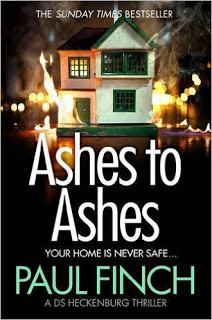 And immortality is undoubtedly the status we’d all like our cop characters to achieve, even if we don’t exactly anticipate it. For which reason, I’m very proud that on April 6 this year,
ASHES TO ASHES
, the sixth novel in my DS Mark ‘Heck’ Heckenburg series, was published. Heck works for Scotland Yard’s Serial Crimes Unit, which, as part of the National Crime Group, sends him all over England and Wales. But he’s a cop whose personal life is massively complicated by the fact that his ex-girlfriend is now his boss, by hideous events in his early years, and by an innate obsessiveness, which sees him embark on such dogged pursuits of justice that he will literally stop at nothing to get a result.
And immortality is undoubtedly the status we’d all like our cop characters to achieve, even if we don’t exactly anticipate it. For which reason, I’m very proud that on April 6 this year,
ASHES TO ASHES
, the sixth novel in my DS Mark ‘Heck’ Heckenburg series, was published. Heck works for Scotland Yard’s Serial Crimes Unit, which, as part of the National Crime Group, sends him all over England and Wales. But he’s a cop whose personal life is massively complicated by the fact that his ex-girlfriend is now his boss, by hideous events in his early years, and by an innate obsessiveness, which sees him embark on such dogged pursuits of justice that he will literally stop at nothing to get a result.I’m totally delighted that Heck has now commanded sufficient attention in the crime market to have lasted this long in print. Hopefully, there are more books to come – I certainly have plenty more planned.
Anyway, referring back to that huge influence I mentioned previously, as exerted by all that classy cop TV we’ve been so prolongedly exposed to, here, in no particular order, are ...
THE TOP TEN COP SHOWS THAT HAVE INSPIRED MY WORK THE MOST
(I’d love to, and could easily have, chosen many more, but we have to draw the line somewhere, alas):
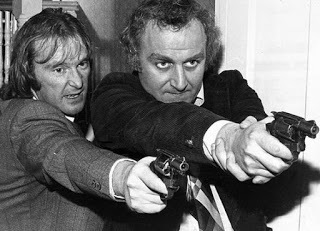 The Sweeney (75-78): British TV put the stern but friendly beat-bobbies of the Dixon of Dock Green era firmly behind it with this high-energy action series from Thames Television, which focussed on the investigations of the Flying Squad, London’s elite anti-robbery unit. It shocked even 1970s audiences with its sex and violence, and made lasting stars of John Thaw and Dennis Waterman. Teak-tough coppering of the genuine old school.
The Sweeney (75-78): British TV put the stern but friendly beat-bobbies of the Dixon of Dock Green era firmly behind it with this high-energy action series from Thames Television, which focussed on the investigations of the Flying Squad, London’s elite anti-robbery unit. It shocked even 1970s audiences with its sex and violence, and made lasting stars of John Thaw and Dennis Waterman. Teak-tough coppering of the genuine old school.Dragnet (1949-2003): Dragnet may sound as if it’s the longest-running police show in history, but it’s had various incarnations: on the radio, on TV, and on the big screen, but the cases of LA detective Joe Friday, the arch wheeler-dealer in the midst of urban mayhem, are never less than enthralling. Several TV stars have played him, including Jack Webb and Ed O’Neill. Stands alongside The Untouchables as one of the granddaddies of TV cop dramas.
 Miami Vice (1984-89): Allegedly sold on a two-word pitch – MTV Cops – this extraordinary fashion parade of a crime series rewrote the rules in the mid-80s, putting on a show that was faster, slicker and more explosive than anything prior to it, pitting snazzily-dressed Miami detectives Don Johnson and Philip Michael Thomas against a succession of drugs-dealing sleazeballs. Often OTT, it spellbound its initial audiences with its gaudy displays of carnage.
Miami Vice (1984-89): Allegedly sold on a two-word pitch – MTV Cops – this extraordinary fashion parade of a crime series rewrote the rules in the mid-80s, putting on a show that was faster, slicker and more explosive than anything prior to it, pitting snazzily-dressed Miami detectives Don Johnson and Philip Michael Thomas against a succession of drugs-dealing sleazeballs. Often OTT, it spellbound its initial audiences with its gaudy displays of carnage.The Wire (2002-08): Seen by many as one of the greatest crime series of all time, The Wire broke all regular cop show protocols by telling its stories from the perspectives of the criminals as well as the police (usually non-judgementally), and in so doing, painted a vivid, warts-and-all picture of its host city, Baltimore. Sharply observant and meticulously written, it still dominates as one of the classiest and most literary police procedurals in TV history.
 Columbo (1968-90): Peter Falk was already a household name when he took this role (which Bing Crosby rejected!), but it would still send his career stratospheric. His pitch-perfect portrayal of the scruffy but shrewd Lieutenant Joe Columbo perfectly complemented the show’s unique formula, in which we all knew who the murderer was but the tension stemmed from the cat-and-mouse game played between Joe C and his (often) star-name adversary.
Columbo (1968-90): Peter Falk was already a household name when he took this role (which Bing Crosby rejected!), but it would still send his career stratospheric. His pitch-perfect portrayal of the scruffy but shrewd Lieutenant Joe Columbo perfectly complemented the show’s unique formula, in which we all knew who the murderer was but the tension stemmed from the cat-and-mouse game played between Joe C and his (often) star-name adversary.Hill Street Blues (1981-87): In some ways a soap opera, but nevertheless a firm favourite with crime fans, Hill Street unashamedly took us into the private lives and loves of a whole range of individuals working a big inner-city police precinct. Action interwove with social drama as an ensemble cast of compelling characters worked their way through difficult shifts, which they often struggled to recover from afterwards. Gritty and unmissable cop TV.
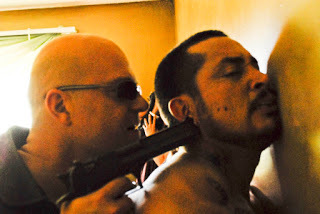 The Shield (2002-08): Fox TV’s finest hour, as Detective Vic Mackey led his cold-blooded Strike Team in a non-stop war against the street-gangs of south-central LA, doing everything possible to pin the hoodlums down but at the same time getting rich from the illegal proceeds. Criticised for its ‘understanding’ portrayal of corrupt police officers, this eye-poppingly well-made cop show remains one of the most emotionally intense ever to hit the screen.
The Shield (2002-08): Fox TV’s finest hour, as Detective Vic Mackey led his cold-blooded Strike Team in a non-stop war against the street-gangs of south-central LA, doing everything possible to pin the hoodlums down but at the same time getting rich from the illegal proceeds. Criticised for its ‘understanding’ portrayal of corrupt police officers, this eye-poppingly well-made cop show remains one of the most emotionally intense ever to hit the screen.Cagney and Lacey (1982-88): Picking up the gauntlet where Angie Dickinson’s pioneering Police Woman dropped it, Cagney and Lacey followed the buddy-buddy cop format, but in this case with two female detectives, Tyne Daley and Sharon Gless, trawling New York’s mean streets, leading very different private lives, encountering endless chauvinism, and yet proving as effective a crime-fighting duo as any of their male counterparts. Great banter too.
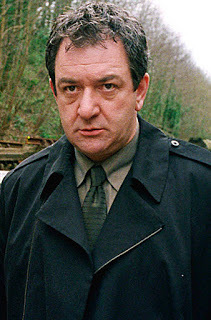 Messiah (2001-2008): Though there have only been four installments in this hard-hitting BBC adaptation of (and spin-off from) Boris Starling’s original novel, Ken Stott has never been better as DCI Red Metcalfe, whose adversarial Murder Squad pursued vicious killers responsible for crimes crazier and more harrowing than we’d ever seen before. The first outing in particular – which included crucifixions and sawings-in-half – struck new levels of horror in TV police drama.
Messiah (2001-2008): Though there have only been four installments in this hard-hitting BBC adaptation of (and spin-off from) Boris Starling’s original novel, Ken Stott has never been better as DCI Red Metcalfe, whose adversarial Murder Squad pursued vicious killers responsible for crimes crazier and more harrowing than we’d ever seen before. The first outing in particular – which included crucifixions and sawings-in-half – struck new levels of horror in TV police drama.Happy Valley (2014-16): One-time soap star Sarah Lancashire won deserved praise for her performance as a droll uniformed sergeant in a none-too-idyllic English rural setting, where she was confronted by drugs, rape, kidnapping and serial murder. A humungous hit on British television, Happy Valley made audiences nervous with its graphic portrayal of violent crime and its repercussions, and for its frank depiction of a tired police force in a very bleak world.
THRILLERS, CHILLERS, SHOCKERS AND KILLERS …
An ongoing series of reviews of dark fiction (crime, thriller and horror novels) – both old and new – that I have recently read and enjoyed. I’ll endeavour to keep the SPOILERS to a minimum; there will certainly be no given-away denouements or exposed twists-in-the-tail, but by the definition of the word ‘review’, I’m going to be talking about these books in more than just thumbnail detail, extolling the aspects that I particularly enjoyed … so I guess if you’d rather not know anything at all about these pieces of work in advance of reading them yourself, then these particular posts will not be your thing.
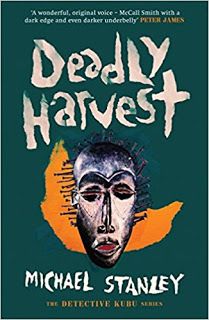 DEADLY HARVEST
DEADLY HARVEST by Michael Stanley (2016)
Detective David ‘Kubu’ Bengu, Assistant Superintendent of the Gaborone CID, in Botswana, needs a relaxed attitude and a good sense of humour to be able to do his job properly. And that’s not just because he has a procession of heinous crimes to investigate, even though he does, but because he also has to show constant political acumen.
On the whole, Botswana is a well-organised country and a laidback society. Its democratic status is well established and there have been a number of general elections which have been fair and have passed off peacefully. But politics is never an easy issue in this part of Africa; there is often some minor potential for trouble. And on this occasion – when Deadly Harvest opens – it may be worse than usual, because Bill Marumo, charismatic founder and leader of the Freedom Party, looks likely to upset the applecart. He is a strong candidate in the upcoming elections, and if he wins power in Gaborone, it will be a real blow to the ruling Botswana Democratic Party.
A routine event, you might think – politics would not be politics without surprise results now and again. But Marumo appears to be under threat. When bloody graffiti is daubed on his house and a severed dog’s head stuck on a post outside his door, local CID boss, Director Mabaku – a stern but fair-minded individual, constantly frustrated to be at the beck and call of his establishment paymasters – instructs his best detective, Kubu, to get to the bottom of it quickly but also to exercise sensitivity as the last thing they want is suspicion falling on the government.
Kubu thinks his time could be spent more profitably, but he’s a dutiful officer and he recognises that there are issues here which need addressing – and so he takes the case.
Meanwhile, rookie detective, Samantha Khama, the first female officer to join the Botswana CID, has taken it on herself to investigate the disappearances of two little girls from nearby villages. Both incidents occurred years apart, yet the circumstances were highly suspicious, all the evidence indicating that the youngsters, who were engaged in routine chores at the time, were snatched from public places by strangers who approached them in cars. The local rural police have had no real success in tracing them, but Samantha is disgusted to learn that neither have they tried especially hard. To her mind, there could be two reasons for this: standard inefficiency, which still exists in parts of Botswana’s various civil services, and which she has no patience with; or the muti belief, which she reviles but at the same time fears.
Muti, a form of tribal magic, involves the incantation of spells and the preparation of potions made from organic materials such as plants, herbs, animal parts and sometimes – on occasions when the desired effect is huge (such as the acquisition of immense power!) – fragments of human beings who have been ritually sacrificed by a witch doctor. This in itself is pretty horrific, but it actually gets worse; to achieve the perfect outcome, these witch doctors, the majority of whom assure the authorities that they longer practise muti in which humans are harmed (though who would admit otherwise?) need very specific and vulnerable kinds of victims: usually innocent children and/or albinos.
Initially, Khama struggles on alone in this enquiry. No-one else takes it seriously, while her prickly personality – she is a budding feminist – does not win her over to the largely conservative men with whom she must work. Kubu, a larger-than-life character who is so cheerful and upbeat that he is difficult to offend, is inclined to assist when he can spare a moment, but he too is very busy – especially when Bill Marumo is unexpectedly and brutally murdered. As it transpires, Kubu apprehends a suspect in this crime fairly easily, but increasingly he comes to suspect that he hasn’t even got close to the true evil in their midst, only to then make an astonishing discovery – namely that there may be a muti connection to Marumo’s death as well
Immediately, Khama’s investigation is accorded an entirely new degree of importance. Mabaku combines the two enquiries, Kubu and Khama joining forces. But even for two excellent detectives, it is still a monumental challenge, Kubu convinced that a particularly dangerous witch doctor is somewhere nearby, who, even though he is perpetrating horrific crimes, may enjoy the compliance and even the protection of individuals high up in the ranks of Gaborone officialdom. The dauntless duo continues to receive the full support of Director Mabaku, who is currently seeking a big promotion and thus wants results (though he too is distracted as he has a strong rival in the young but super-efficient head of the Diamond Division, Joshua Gobey). But other senior ranks, whom Kubu would previously have trusted implicitly, are now behaving strangely.
Kubu is increasingly fearful that if this case is ever solved, life as he knew it may never be the same again …
The Icelandic author, Yrsa Sigurdardottir, described Deadly Harvest as ‘sunshine noir’, and that is surely the perfect description of what you’ll get when you open this novel.
If such a phrase evokes a pleasing atmosphere of dramatic sunsets, nodding palms and scenic vistas as viewed from deckchairs on warm verandas, then that is absolutely accurate. For though this is indeed a dark story, there is a deep, deep warmth here. It emanates not just from the central characters, who are among the most pleasant I’ve ever known, but also from Botswana itself, both the spirited people who dwell there and its vibrant, post-colonial culture.
This is NOT the savage Africa of old-fashioned adventure novels. There are no jungles here, no ferocious beasts, no warring tribes. Likewise, this isn’t the Africa of so many modern newsreels, with bands of lawless guerrillas terrorising villages, or political despots inflicting injustice at a whim. Instead, what we get here is an orderly society with laidback people leading harmonious lives, and neighbours and families, even if they’re impoverished, respecting each other to a remarkable degree.
Granted, it’s a world ravaged by AIDS, and political and police corruption are key elements in this tale, but Botswana – and that’s the Botswana of real life, not just the Botswana presented here – has long been renowned among sub-Saharan African counties for its stable economy and generally good government. What’s more, much of this appears to stem from the determination of a nation-state to make a peaceful and prosperous future for itself.
Don’t get me wrong, Deadly Harvest doesn’t preach about this. None of this inherent goodness is in-yer-face, but it is certainly embodied in the character of David ‘Kubu’ Bengu, probably one of the most engaging lead-characters I’ve ever encountered in detective fiction. An opera-lover, a wine connoisseur, and a physically immense chap, overly fond (by his own admission) of good food and cookies (‘Kubu’ Translates into English as ‘Hippo’), he is also an expert homicide investigator, not just au fait with all the latest technical knowledge, but, when it comes to identifying hidden clues, possessed of a near-Holmesian instinct. His loving family – which figures large in this novel, and of which his wife, Joy, is the beating heart – only adds to his character, giving him huge emotional depth and appeal.
Be warned, though … this does not mean that Kubu is a soft touch. Far from it. The career copper in him loathes the ruthless criminals he so often pursues, seeing them as enemies of his people and potential destroyers of society. In Deadly Harvest , he is particularly determined to eradicate the muti superstition, which has claimed so many innocent lives in his beloved homeland.
In this cause, he is ably supported by the zealous Samantha Khama, a sometimes spiky individual, whose one Achilles heel may be that she is too quick to view Kubu’s fatherly attitude as patronisation, but who still has lots to learn, and yet whose quick wits and commitment to the job make her an ideal trainee-detective and a tireless ally when things get tricky. At the top of the CID command structure, meanwhile, sits Director Mabaku, a terse man but another likeable individual, who nicely personifies the difficulties so many senior policemen face in law-enforcement cultures the world over when they are torn between moral obligation and political compromise.
Unfortunately, I can’t elaborate too much on the villains of the piece. Because in many ways, Deadly Harvest is an archetypical (and yet at the same time very different kind of) whodunit, and the real baddies stay hidden throughout much of the narrative. Suffice to say, they are colourful and terrifying in equal measure, but they wouldn’t have half the impact if they didn’t combine the worst elements of two entirely different worlds: the arcane devilry of ancient myth, which to believers can reach you at any time and in any place, and the worst wiles of Modern Man, wherein self-advancement is everything and the losers can simply be damned.
Michael Stanley in actual fact is two authors working together: Michael Sears and Stanley Trollip. Both are native Africans, so perhaps it’s no surprise that they handle this ‘black magic’ aspect of the novel with great skill and sensitivity. Muti murders are still a major problem in some parts of Africa, with entire police squads in that part of the world dedicated to locating the missing and bringing those responsible to justice. Despite this being the 21st century, it seems that the pernicious cult has something of a hold on the African imagination: in Deadly Harvest , even the enlightened Kubu occasionally wonders what he’s dealing with. Curious and unexplained things do happen, which in any community at the end of its tether could easily be attributed to supernatural agencies, so it’s no surprise that on occasion he struggles to find allies even among his fellow police officers.
At no stage, though, do you get the impression that this malignancy has its claws deeply rooted in Botswana. Kubu and Khama are the living proof of that, a pair of brave and resourceful cops who are determined to confront this age-old wickedness, knowing (or at least gambling) that their vindication will come when they bring the witch doctor and his acolytes to book through the normal procedures of everyday law.
Deadly Harvest is an inspiring read. Tense but enjoyable, and populated with delightful characters. I guarantee you will never view sub-Saharan Africa in the same way again.
And now, as always, I’m going to suggest my own choice of lead cast should Deadly Harvest ever make it to the screen (though of course, that could only happen if other Kubu stories got there first, this particular novel being the fourth in the series). And what fun they would have shooting it; I mean, you couldn’t do anything other than go to the actual place, could you? Anyway, here are my picks:
Detective David ‘Kubu’ Bengu – Nonso Anozie (the role he was born to play, I swear)Detective Samantha Khama – Nathalie EmmanuelJoy Bengu – Naomie HarrisDirector Mabaku – Djimon HounsouBill Marumo – Adewale Akinnuoye-AgbajeJoshua Gobey – Louis Cordice
Published on June 01, 2017 00:38
May 7, 2017
Making our gory mark in far distant places
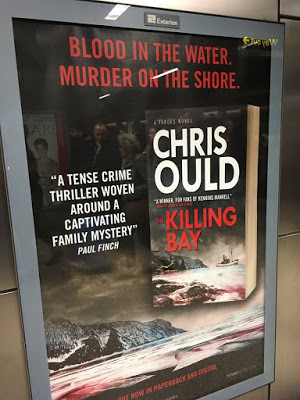 Fast on the heels of my last blog, I’m posting a new one today, and this is mainly in anticipation of CRIMEFEST at Bristol, later this month.
Fast on the heels of my last blog, I’m posting a new one today, and this is mainly in anticipation of CRIMEFEST at Bristol, later this month. In addition, in rather timely fashion, I’ll also be reviewing L.A. Larkin’s international conspiracy tour de force, DEVOUR(it’s timely in the sense that Ms. Larkin will be chairing one of the panels on which I’m sitting at Bristol … an event I can hardly wait for, though I’m always a tad nervous about these things).
As usual, you’ll find that review towards the lower end of today’s post. But before we get down there, I want to talk a little bit about the Bristol event, but also – and maybe you can treat this as a kind of ‘thought for the week’ – about the many benefits that writers can draw from reading and reviewing their rivals’ work.
That may sound like a contradiction in terms, but just bear with me for a couple of secs …
If you look above, you’ll see a billboard advert for Chris Ould’s very enjoyable Killing Bay; you’ll also see that it’s carrying a quotation from my good self. Now, that billboard is located on London Bridge, one of the most heavily utilised thoroughfares in the capital. It’s a truly great showcase for Chris Ould, but it’s not a bad showcase for me either. In fact, this has been happening quite a lot in the last few months. As you’ll see, just to make the point, I’ve liberally peppered today’s blog with advertising graphics professionally produced by publishers for their authors, which all carry snippets from reviews I’ve given them.
I’m sure you can all envisage the advantage I gain from this.
Of course, we don’t review fellow authors’ works specifically because we hope this will happen. It isn’t, and can never be, a guaranteed way to get your name into the public eye, because quite often you’ll never hear about said review again, let alone see it on a giant billboard in the heart of London. But as you can see, if/when that does happen, even though the main focus is on another writer’s book, it certainly helps get the message out that you too are a person of note.

But even if you don’t even get close to such an honour, posting positive reviews about works you’ve enjoyed is never a waste of time. It’s to all our advantage if our genre of choice is healthy and busy, and if the public are enthusiastically buying the kinds of books we write. And then, if there is a symbiotic offshoot, because other authors and their editors are so grateful to see our positive comments that they return the compliment, all the better, eh?
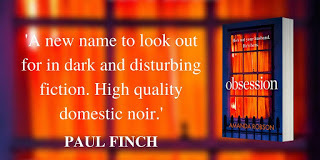 It’s not as if leaving reviews is a difficult procedure these days. We don’t all have to do what I do, which is write lengthy blogs. Online retailers like Amazon, and review sites like Goodreads, enable us to leave quick, short paragraphs in praise of those books we’ve enjoyed. And it frustrates me no end when I talk to fellow authors who somehow can never find the time to do this. Ultimately, I feel certain that their own careers would benefit if they could only make this minor effort a little more often.
It’s not as if leaving reviews is a difficult procedure these days. We don’t all have to do what I do, which is write lengthy blogs. Online retailers like Amazon, and review sites like Goodreads, enable us to leave quick, short paragraphs in praise of those books we’ve enjoyed. And it frustrates me no end when I talk to fellow authors who somehow can never find the time to do this. Ultimately, I feel certain that their own careers would benefit if they could only make this minor effort a little more often.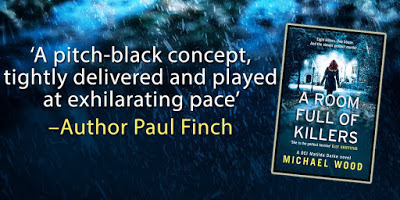
Anyway, that’s my lecture for the week over with. Let’s concentrate next on CRIMEFEST 2017 , which as always, is located at the Marriott Royal in Bristol, and this year runs from May 18-21.
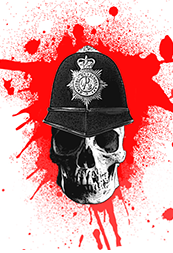 For those not in the know, Bristol CrimeFest is one of the biggest and best crime-writing events in the UK. In short, it’s a convention for crime and thriller readers – not just the fanatics, but those with a passing interest as well – and it provides a big draw for novelists, publishers, editors, agents, reviewers and bloggers from around the world.
For those not in the know, Bristol CrimeFest is one of the biggest and best crime-writing events in the UK. In short, it’s a convention for crime and thriller readers – not just the fanatics, but those with a passing interest as well – and it provides a big draw for novelists, publishers, editors, agents, reviewers and bloggers from around the world.As well as the annual gala dinner, its programme comprises interviews with guest authors, one-to-one manuscript assessments, pitching sessions with agents, and over 40 panels featuring crime fiction figures from all corners of the genre. But the tone is never less than informal, friendly and very inclusive. You pop along there as a reader and you spot your favourite crime/thriller author in the hotel corridor, don’t hesitate to stop him/her for a quick chat – that’s what we’re there for.
Special guests this year include authors Ann Cleeves, Anthony Horowitz and Peter Lovesey, artist Tom Adams and Agatha Christie expert and archivist, John Curran.
I attend CrimeFest every year these days, but have more responsibility than usual in 2017, as I’m participating in two panels. First of all, on Thursday May 18 at 3.50pm, I’ll be in the more than capable hands of L.A. Larkin (see today’s book review!), when she moderates The Hunter Hunted: Running For Your Life. And I’ll be on that panel in some very august company: Stefan Ahnhem, Felix Francis and Antti Tuomainen. But more nerve-rackingly still, I’ll be chairing my own panel on Friday May 19, at 9am: How Many Deaths? The Appeal of the Serial Killer in Crime Fiction. On the table with me for this one are Helen Fields, James Carol, Mark Roberts and Leigh Russell.
If nothing else, I can safely predict that we’re going to have a lot of fun.
Not everyone can make it to Bristol, I know … but if you are there and you fancy a quick natter, just nudge my shoulder and I’ll be happy to gossip for a bit.
THRILLERS, CHILLERS, SHOCKERS AND KILLERS …
An ongoing series of reviews of dark fiction (crime, thriller and horror novels) – both old and new – that I have recently read and enjoyed. I’ll endeavour to keep the SPOILERS to a minimum; there will certainly be no given-away denouements or exposed twists-in-the-tail, but by the definition of the word ‘review’, I’m going to be talking about these books in more than just thumbnail detail, extolling the aspects that I particularly enjoyed … so I guess if you’d rather not know anything at all about these pieces of work in advance of reading them yourself, then these particular posts will not be your thing.
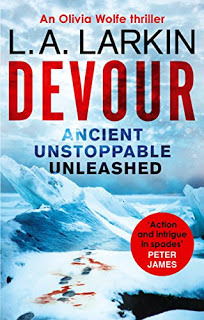 DEVOUR
DEVOUR
by L.A. Larkin (2016)
After a high-risk assignment in Afghanistan’s poppy-growing region, on the trail of a terrorist network, energetic investigative-journalist, Olivia Wolfe – who is no stranger to danger, but even by her normal rip-roaring standards only just returns from this trip with her life and limbs intact – is dispatched by her demanding editor, Moz Cohen, to the even more perilous realm of western Antarctica.
At first, she isn’t keen. It doesn’t sound like her normal field: a team from the British Antarctic Survey drilling down through fathoms of concrete-hard ice in a quest to discover samples of prehistoric life that may still be lurking in subglacial Lake Ellsworth … until she learns that her real mission is to investigate the various ‘accidents’ that are befalling the BAS crew at their research station, including an unexplained and rather horrible death, which more than likely was murder.
This is more up Wolfe’s street, but the situation is complicated by an unseen but menacing presence at home, a mysterious stalker, pursuing her both in reality and online, who barely leaves a trace of himself but is always undeniably there. Who this person is, and why he/she may have a beef with Wolfe is a complex thing to ascertain: there are plenty of people with reason to punish a journalist who has uncovered their dirty dealings in the past. At the same time, of course, Wolfe has to head down to the bottom of the world, to find out whatever she can about the problems facing the BAS.
This, in itself, is no picnic. The difficult conditions of the Antarctic and an engineering/scientific team who, though on the surface they seem quite normal, soon start to reveal stresses and strains among their ranks, combine to make Wolfe’s job a real challenge. While team-leader Professor Michael Heatherton is a time-served professional, dedicated to his cause and with no apparent interests other than a pursuit of knowledge, other members of the group are more secretive, in particular the intense and rather introverted Scottish scientist, Toby Sinclair.
On top of that, she learns that a rival Russian expedition to nearby Lake Vostok, whose mission failed when the lake was polluted by inadequate drilling processes, are now trying to bribe and bully their way into the British effort, which, in Wolfe’s eyes, puts them high on the suspect list – not least the most menacing member of the Russian party, Sergey Grankin, who is almost certainly a government agent. It also raises questions, particularly among the rest of the British team, about naturalised Brit but Russian-born engineer, Vitaly Rushkov; he is one of their own colleagues, at least superficially, but though Wolfe finds him attractive, he also frustrates her because he won’t reveal enough about himself to win her trust.
The tension is ramped up even more – to breakneck pace in fact, when the British team succeed in their quest, breaking through into the subterranean lake – an incredible three kilometres below the ice – and discovering something that hasn’t seen the light of day for millions upon millions of years; something so appalling that it has the potential to completely destroy modern society.
Needless to say, in the time-honoured fashion of greedy world-powers both fictional and real, it isn’t long before various shady forces are competing for control of this monstrous thing.
Even from this relatively early stage of the novel, it is difficult to reveal any more of the actual synopsis for fear of giving away spoilers, but suffice to say that, even when Wolfe returns to London, she finds herself in the midst of a deadly conflict, with numerous vying interests turning the city into a war-zone, and even the little she has already discovered making her into a prime target. Wolfe has developed lots of good contacts in her time, but even two of the best on her home turf – former top cop, Jerry Butcher, something of a father to her, and the infinitely shadier DCI Dan Casburn – are of minimal help; they may even be a hindrance as she tries to battle her way through a tangled web of confusing lies and life-threatening deceit, only to uncover a shocking and terrifying truth … If you like your thrillers to have an international scope, then this one is definitely for you. Devour is a wide-ranging, continent-spanning adventure played out in tough, no-nonsense fashion against a latter-day Cold War-type atmosphere. But don’t make the mistake of thinking we’re in 007 territory here. There is a high-tech dimension to Devour for sure, but there is also an aura of realism. We’re not talking ridiculous gadgetry, improbable skills and mind-boggling schemes for world-domination. New heroine, Olivia Wolfe, though she herself is a more than competent globe-trotter and thoroughly au fait with all the latest communications devices, is also very human, which is her most appealing aspect.
In fact, Devour’s greatest strength for me – considering that it’s painted on such an immense canvas – is that it’s all very plausible.
I’d go as far as to say that it’s terrifyingly plausible.
To start with, there is a real sense of danger in this book, and I don’t just mean the horrific force lurking in the sub-Antarctic depths (more about that later), but also from our heroine’s various antagonists. Whoever’s on your tail in Devour , whether they be opium lords, terrorists or security service personnel gone rogue (or even not gone rogue – just doing their government’s dirty work at full throttle!) – you soon get to learn that they are experts at what they do; it’ll only ever be a page or so before they catch up with you. It also becomes plain at an early stage that none of these heinous individuals are playing by the rules of chivalry.
Oh yes, there is some real brutality on show here. Everything about Devour is harsh, gritty and real. Its central characters spend much of it in a state of fear, particularly the civilian scientists who never imagined that their ground-breaking research could have caused such chaos, not to mention Wolfe herself, who soon learns that even if she emerges from this adventure unscathed, her life as she knew it will be over. Several times there are references to people who simply disappear, or run the risk of disappearing – in L.A. Larkin’s world, the niceties of international law just don’t apply when such threats as this endanger the planet, and I, for one, am more than prepared to believe that could be true.
Even routine activities, such as travelling, are given a rugged makeover. We’re talking long plane journeys, soulless waystations, the extreme geophysical conditions of the Arctic, not to mention a drab and wintry London which itself has the potential to endanger life – for example, in one scene, Wolfe gets soaking wet and as it’s December, it isn’t long before she’s struggling with hypothermia. At the same time, death means death; during an early sojourn to Afghanistan, she witnesses the shooting of a young woman, and it haunts her afterwards; she sees it playing through her head again and again.
These are the uber-realistic touches that we simply don’t get in run-of-the-mill thrillers, and Larkin hits us with them repeatedly, as if saying: “This is what it means, this is how it would actually be if you were to genuinely participate in this world”.
And I totally loved it, almost as much as I loved the central character.
Olivia Wolfe is an excellent heroine. She may not be the sort who can take waves of bad guys apart with her bare hands, or jump from plane to train to motorbike and still make it to her favourite restaurant in time for dinner. She may be a martial artist of sorts, but she gets battered, she gets hurt, she gets frightened. However, her main asset is that she is a skilled and highly driven investigative journalist. She hasn’t just got a nose for a great story, no matter how far afield it may lie, she has the determination and wherewithal to get there in time to cover it. But she has a survival instinct too. In anticipation of the dangers she will face, she is technically proficient, and perhaps more importantly, an exceptional judge of character, knowing instinctively who to trust and who to suspect.
In some ways, this may make her a tad unsympathetic. All the way through, she has an on/off romantic relationship with the Russian engineer, Yushkov, and yer she maintains an antipathy towards him too because … well, mainly because he’s Russian, and in this book the Russians are generally up to no good. It reaches a stage where as a reader it almost becomes tiresome, and yet that’s the point. Olivia Wolfe has survived as long as she has because she’s smarter than we are. She has really played this game, whereas we haven’t.
If I’m giving the impression that this is an edgier-than-usual book, that’s probably accurate. It’s no romp, that’s for sure. But this slap-in-the-face factor serves two purposes: it makes you believe it absolutely, and it keeps you glued to the pages – as, of course, does the overarching, and vaguely monstrous – concept. On that subject, it would be easy, if you’d only read the blurbs, to think that what you’ve got here is something akin to John W. Campbell’s Who Goes There? (filmed as T he Thing from Another World). And why not? Something nasty is lurking under the Antarctic ice, a bunch of well-meaning scientists discover it and thaw it out, only to find that it’s a force beyond Man’s experience, which imperils the Earth as a result. And if it sounds like science fiction, there may be an element of that, though I draw your attention to the real attempt by British scientists to drill down to Lake Ellsworth in 2012, which failed (maybe fortuitously, or maybe it was halted – who can say?). But it’s all still incredibly plausible. I’m not going to give out any spoilers concerning the nature of the thing, but it’s truly horrifying because, even if surprises you – which it did me – you can very quickly envisage the colossal destruction that would result.
In addition, the novel is underlined with in-depth research – no B-movie stuff, this. LA Larkin, an Antarctic explorer in her own right, handles the biological and engineering complexities of the mission to the South Pole and the follow-up investigations with the same authority and conviction that she does the political intrigue and secret service chicanery, and yet weaves it all seamlessly into the narrative and the dialogue so that at no point do we feel we’re being hit by a cut-and-paste from Wikipedia.
It all makes for a totally believable and completely enthralling techno/eco thriller, perhaps with a few dollops of psycho horror mixed in for good measure (because let’s not forget that there’s an equally formless, equally dangerous threat to Olivia Wolfe lurking at home).
An all-round, superbly-crafted reading experience, which just screams for your attention.
And now, as usual and just for laughs, I’m going to nominate my own cast should Devour ever make it to the screen (and in this era of conspiracy thrillers and girl heroes, I reckon now would be the perfect time). Anyway, here are my picks:
Olivia Wolfe – Emily BluntMichael Heatherton – Tim McInnernyVitaly Yushkov – Igor PetrenkoToby Sinclair – Alan CummingDCI Dan Casburn – Mark A. SheppardJerry Butcher – Hugh LaurieMozart Cohen – Ian McShaneSergey Grankin – Vladimir Mashkov
Published on May 07, 2017 11:01
May 3, 2017
Terror Tales of Cornwall hits the shelves
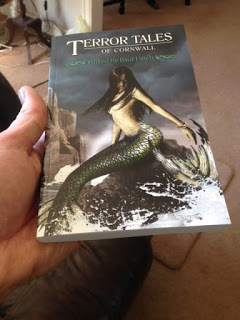 And here we are at last. After much frantic scampering about, I can announce that TERROR TALES OF CORNWALL is done, dusted and ready to buy. And yes, it does exactly what it says on the tin.
And here we are at last. After much frantic scampering about, I can announce that TERROR TALES OF CORNWALL is done, dusted and ready to buy. And yes, it does exactly what it says on the tin. It takes you down to England’s quaintest, most beautiful, most mysterious, and often wildest coastal region, and then hits you with many aspects of the terrors to be found there.
On a similar ‘homely horror’ subject, this week I’ll also be reviewing Dan Simmons’s seminal story of rural darkness, SUMMER OF NIGHT. As usual with my novel reviews, you can find that one at the lower end of today’s post, and as always, it’s a detailed and in-depth discussion.
But first, we’re going to talk about my new anthology of regionally-flavoured chillers, TERROR TALES OF CORNWALL .
Oh, I can’t tell you how long I’ve been waiting to say that.
 I guess everyone who follows this blog is well aware that the TERROR TALES series, which has now been running since 2011, was interrupted about a year ago when Gray Friar Press sadly had to withdraw from the game. But the gauntlet has been passed, and is now firmly in the grasp of
TELOS PUBLISHING
, who have done a masterly job with this, their first contribution.
I guess everyone who follows this blog is well aware that the TERROR TALES series, which has now been running since 2011, was interrupted about a year ago when Gray Friar Press sadly had to withdraw from the game. But the gauntlet has been passed, and is now firmly in the grasp of
TELOS PUBLISHING
, who have done a masterly job with this, their first contribution.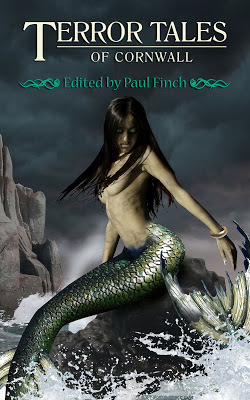 In case anyone is concerned, fear not – the book looks much like the previous volumes (why fix something that isn’t broken?). It has the same style and layout, ghoulish fact interspersing with ghastly fiction, and it follows the same ethos, offering (mostly) new supernatural horror stories based on the mythology, folklore, history and geography of the region. In other words, these aren’t just stories that happen to be set in Cornwall, they are stories about Cornwall.
In case anyone is concerned, fear not – the book looks much like the previous volumes (why fix something that isn’t broken?). It has the same style and layout, ghoulish fact interspersing with ghastly fiction, and it follows the same ethos, offering (mostly) new supernatural horror stories based on the mythology, folklore, history and geography of the region. In other words, these aren’t just stories that happen to be set in Cornwall, they are stories about Cornwall.So, without further ado, here is the artwork for the book in all its glory, the back-cover blurb, and the full table of contents:
Cornwall, England’s most scenic county: windswept moors; rugged cliffs; and wild, foaming seas. But smugglers and wreckers once haunted its hidden coves, mermaid myths abound, pixie lore lingers, henges signal a pagan past, and fanged beasts stalk the ancient, overgrown lanes …
The serpent woman of PengersickThe screaming demon of Land’s EndThe nightmare masquerade at PadstowThe feathered horror of MawnanThe terrible voice at St AgnesThe ritual slaughter at CrantockThe hoof-footed fetch of Bodmin Moor
And many more chilling tales by Mark Morris, Ray Cluley, Reggie Oliver, Sarah Singleton, Mark Samuels, Thana Niveau and other award-winning masters and mistresses of the macabre.
CONTENTS
We Who Sing Beneath the Ground by Mark MorrisGolden Days of TerrorIn the Light of St Ives by Ray CluleyMorgawr RisingTrouble at Botathan by Reggie OliverFrom the Lady Downs‘Mebyon versus Suna’ by John WhitbournThe Serpent of PengersickThe Unseen by Paul EdwardsFinned Angels, Fish-Tailed DevilsDragon Path by Jacqueline SimpsonJamaica InnThe Old Traditions Are Best by Paul FinchGuardians of the CastleThe Uncertainty of All Earthly Things by Mark ValentineThe HooperHis Anger Was Kindled by Kate FarrellThe Bodmin Fetch Four Windows and a Door by DP WattOwlmanClaws by Steve JordanThe Cursing PsalmA Beast by Any Other Name by Adrian ColeOf the Demon, TregeagleMoon Blood-Red, Tide Turning by Mark SamuelsSlaughter at PenrynThe Memory of Stone by Sarah SingletonQueen of the WindShelter from the Storm by Ian HunterThe Voice in the TunnelsLosing Its Identity by Thana Niveau
Just to whet your whistles even more, here are three snippets from the stories contained herein:
They came for him, the white children. They dragged him out of the house, like a rag doll. Rocks scored his skin and bruised his bones. At the edge of the sea, they peeled off his clothes and sank their hands through his pouched skin into his body, marvelling at his viscera, taking him to pieces, playfully.The Memory of Stone Sarah Singleton
No more than two metres away was a circular pit that, as far as she could tell, stretched from one wall of the barn to the other. She thought of animal traps, in the bottom of which might be sharpened stakes designed to pierce the animal’s body as it fell. Oh God, oh God. Was that what this was? She tilted her phone down, shining it into the hole. It wasn’t black down there, as she had expected. It was red. Blood red. We Who Sing Beneath the Ground Mark Morris
The masked man yanked the chainsaw’s cord, and Lee shrunk towards the door, then whirled when he heard hoof falls and the creaking of floorboards behind him. There was that flashing again – a tiny red dot – and Lee realised that he was looking straight into the lens of a video camera. The Unseen Paul Edwards
THRILLERS, CHILLERS, SHOCKERS AND KILLERS …
An ongoing series of reviews of dark fiction (crime, thriller and horror novels) – both old and new – that I have recently read and enjoyed. I’ll endeavour to keep the SPOILERS to a minimum; there will certainly be no given-away denouements or exposed twists-in-the-tail, but by the definition of the word ‘review’, I’m going to be talking about these books in more than just thumbnail detail, extolling the aspects that I particularly enjoyed … so I guess if you’d rather not know anything at all about these pieces of work in advance of reading them yourself, then these particular posts will not be your thing.
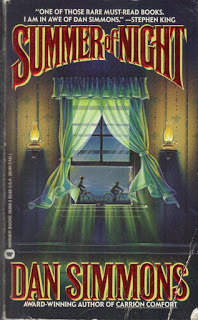 SUMMER OF NIGHT
SUMMER OF NIGHT
by Dan Simmons (1991)
It is 1960 and the start of summer in the Illinois farming town of Elm Haven. For a bunch of local school-leavers, a tightknit group of adventurous 11-year-olds self-defined as the ‘Bike Patrol’, long months of vacation lie ahead. The sun is high, the corn ripening in the encircling fields, and while the adults have their own issues to deal with – the new decade is already presenting different political challenges! – for the youngsters it’s just another extended playtime.
But then something goes wrong. One of their former classmates, a hillbilly kid called Tubby Cooke, disappears, and the Patrol – level-headed leader Dale Stewart and his younger brother, Lawrence, brave and good-hearted Mike O’Rourke, troublesome roughneck Jim Harlen, super-intelligent Duane McBride and loyal team-player Kevin Grumbacher – take it on themselves to investigate.
And very soon, they wish they hadn’t.
At the heart of Elm Haven stands Old Central, the large, ornate and crumbling schoolhouse they’ve just left, which is now condemned and will shortly be torn down. The guys can’t help but feel there was always something wrong about Old Central – not just the school itself, but its staff too, who behaved increasingly oddly as the end of the semester approached. The kids especially become suspicious when they learn that Tubby was last seen alive in the school toilets.
But it’s a hot summer and there is lots of other fun to be had, and so the investigation is undertaken half-heartedly. Surely there was nothing really wrong with their old school?, and none of them much liked Tubby Cooke anyway, nor his oddball sister, Cortie. Within a few days, the whole thing is put to bed … but now it seems their inquisitiveness has aroused a latent hostile force, which they’d never previously noticed in Elm Haven.
The Rendering Truck, a ramshackle vehicle full of rotting animal carcasses, takes to following them around town and trying to run them off the road, while a weird WWI era soldier begins popping up in their peripheral vision and even chases them when he catches them out in the fields.
Something weird is indeed going on here, and Old Central seems to lie at the heart of it.
However, it is only when Duane researches the history of the school and learns that as well as a legacy to the town from the wealthy and mysterious Ashley family, it was also used to house an arcane artefact shipped over to the States from Europe and associated throughout its long history with sorcery and devil-worship, that Hell is really unleashed.
Nightmare faces appear at the boys’ windows, shadow shapes emerge from under their beds, axe-wielding figures attack their tents, and horrible things stir in the corn.
Amid many other distractions that the Bike Patrol never anticipated this summer – sexual awakenings and the like – they now must battle for their lives against this dark and intangible foe, which can assume a multitude of forms and soon seems to infest every corner of Elm Haven …
So many US horror writers appear to owe it to themselves to at some point produce at least one novel steeped in the Americana of their small-town youth. This furrow has been successfully ploughed by such major names in the genre as Ray Bradbury, Stephen King and Robert McCammon – to name but a few, so it was no surprise to learn that Dan Simmons had done it too, producing in Summer of Night a semi-autobiographical account of his boyhood in the agricultural Midwest, recollecting it as a fun romp for the most-part, but at the same time striving to capture the complexity of that last summer of childhood, that confusing moment in life when we willingly or unwillingly trade everything that went before, even the good stuff, for a completely different mode of existence (and so often find it a raw deal), and then pumping the adventure levels up dramatically with lashings of supernatural terror.
In the hands of all these great writers, this has proved a potent mix, an unashamed juxtaposing of that cosy age of boy-scout camps and Mickey Mantle baseball cards with the looming subliminal fear of something monstrous and unexplainable. Psychoanalysts would no doubt have a field-day, talking about the remorseless approach of adulthood, the end of play and the commencement of work, and maybe even, with the advantage of hindsight, the transition of that relatively comfortable post-WWII era in America to the more unstable 1960s with its social discord and the horrors of Vietnam.
There is probably something in that, though I suspect it’s actually a lot simpler. Summer of Night is clearly a very personal work for Dan Simmons, but its greatest strength lies in the rollicking and hair-raising tale it tells, and its straightforward pitting of good against evil in such easily understandable fashion that it wouldn’t be out of place on the YA shelves were it not for the juicy language and its frank discussion of adolescent sexuality.
It is certainly a lively and worthy addition to the small-town horror cycle. Many familiar motifs are here: the non-too-perfect lives of some of the kids (who even in the midst of cheerful innocence must cope with ill-health at home, low incomes, drunken or absent fathers, etc), the roaming bands of bullies, the grim and rotting building at the heart of town, the aristocratic founding-family now elevated to semi-mythical status, the existence of something ancient and cruel which only was hinted at prior to this book, the adults who stubbornly refuse to believe in it, and of course the endless, sun-soaked landscapes of youthful reminiscence.
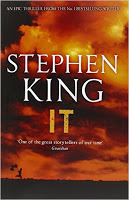 One criticism often levelled at
Summer of Night
is that it’s too similar in tone to Stephen King’s own nostalgic masterpiece,
It
. I see that, but I don’t consider it a weakness – the two novels are cousins for sure but
Summer
is in no sense a rip-off, as the narratives diverge noticeably. However, I do think Dan Simmons’s book suffers a little by comparison.
One criticism often levelled at
Summer of Night
is that it’s too similar in tone to Stephen King’s own nostalgic masterpiece,
It
. I see that, but I don’t consider it a weakness – the two novels are cousins for sure but
Summer
is in no sense a rip-off, as the narratives diverge noticeably. However, I do think Dan Simmons’s book suffers a little by comparison. Whereas It bounces back and forth between childhood and adulthood, Summer of Night anchors us in 1960, and to see the whole thing through the eyes of a bunch of 11-year-olds becomes a bit of a strain when you’re hundreds of pages in and yearning for some adult interaction. It also means that you must suspend belief considerably. Even for a supernatural tale, some of the solutions our youthful heroes adopt feel as if they’d be a little beyond the average bunch of youngsters – their proficiency and ruthlessness with firearms for example, their ability to pick clues from distant history, and their overall maturity in the face of a horrific crisis (when at the same time some of them are too frightened of the dark to turn their bedroom lights off, and others are content to step out of the battle to attend birthday parties and dig for bootlegger treasure!!!).
But these are the only real brickbats. The rest of this novel is a whole load of fun.
Typically for Dan Simmons, it’s a lengthy tale, but it’s sweetly written and totally engrossing. Living, breathing characters populate a richly detailed community. An air of the authentic early ’60s sits vividly on the page, and yet the lurking menace, which, while vague in the early stages, never feels out of place – in fact these are the best parts of the book for me: the slow-dawning awareness that something terrible, only glimpsed at first, is coming on apace, threatening to sweep away this idyllic little enclave in a turbulent world.
And of course, when the book finally fires – it fires on all cylinders.
As you’d expect, there is a grand climax at the end, but well before then – throughout most of the second half of the novel – Simmons hits us a with a series of spectacular action set-pieces, each one scarier and more explosive than the one before it. And don’t be lulled into complacency by the extreme youth of our main protagonists – not all these chilling encounters end well for them (though to say any more on that would really spoil things).
Summer of Night is what people used to refer to as an ‘airport novel’ – in other words it’s a big, fat volume, so big that you’d happily buy it on the first day of your holidays and expect it to see you right the way through. That’s most likely what would have happened; at over 500 pages, it’s an absolute whopper. But though reading habits have changed a little since the 1990s, I still recommend this exciting and enjoyable tome. It may transport you back to your own past, it may provide no more than an amusing diversion for an hour each day, but once you get into the meat of it I guarantee you’ll stick with it right to the end.
In normal circumstances with these reviews, I like to close with some fantasy casting, just for fun picking who I’d love to see play the leads if the book in question were ever to make it to the screen. Alas, on this occasion I must stick my hand up and admit to knowing so little about Hollywood’s current A-list of child stars that I couldn’t make any meaningful suggestions. And given that the kids totally dominate the book, it would seem a little crass to try and cast the adult characters when so many of them occupy background roles.
Published on May 03, 2017 06:53
April 4, 2017
Publication day loometh - and Heck is back
 Okay then, it’s publication week, this week, so forgive me if I’m going to be talking rather a lot today about my latest novel, ASHES TO ASHES.
Okay then, it’s publication week, this week, so forgive me if I’m going to be talking rather a lot today about my latest novel, ASHES TO ASHES. However, the ego can’t be allowed to run away with itself completely, so it won’t just be about me today. In addition, one of my stable-mates at Avon Books, the irrepressible C.L. Taylor (Cally, to those who know her well, as seen left), has also brought a recent thriller out – THE ESCAPE, which I’m very pleased to be reviewing this week. You can find that full-length review and discussion, as usual, at the lower end of today’s post.
Before we actually get to that, I was with Cally at the HarperCollins building at London Bridge earlier this week, for a couple of very enjoyable forums. First of all, we joined forces to do a live video Podcast for HarperCollins (right), which seemed to go down very well – it received significant numbers of hits while we were gabbling, but for those not able to tune in at the time, you can watch the full recording of it below.
We also did a big Q&A session, a really big one – a full two hours of a job – with a great audience comprising bloggers, reviewers, up-and-coming writers, students and everyday readers. As I expected, it was a great deal of fun, the event chaired by Cally’s and my mutual editor, Helen Huthwaite, who kept the subjects rolling and brought in the audience at every opportunity, ensuring that we were hit with all kinds of questions. I like to think we imparted as much of our knowledge of the business as we could in the time available, and were able to chart in words our own personal journeys to publication, both of which have been long and complex, and occasionally fraught with difficulty, setbacks, etc.
Judging from some of the responses online, I think we hit the spot with it. Everyone seemed to have a good day.
These are certainly the events that make this profession worthwhile. It’s probably true to say that we’ve all done our spells alone in the garret, pursuing that much-mythologised solitary existence, the lone writer slogging for hours and hours in a dingy, low-rent room, maybe working by candle-light as he/she bashes out their latest doomed-to-be-undiscovered masterpiece on some clunky, second-hand typewriter. Oh yes, I think we’ve all been there at one time or other. All I can say is … if that’s your current status, you’ve just got to stick with it, because trust me, the rewards will come, and when they do – when you suddenly come face-to-face with the reality of lots and lots of people liking and knowing your work – it will make every moment of that hardship worthwhile.
But just remember, when it does happen, to socialise with those who read you … at least as much as is practicable. That can be a reward in itself, but I don’t believe any of us can actually afford to be aloof. We’re only ever as successful as our last book, and I suspect the public are far more likely to read it and give it the big thumbs-up if they feel they know us as people as well as authors.
 Now, onto the subject of
ASHES TO ASHES
. I can only say that I’m very happy with it. It’s no exaggeration that this book has been a long time in gestation, pirimarily with regard to Heck’s own character. From the outset, I think it’s been plain to followers of this series that our much harassed hero has had deep problems connected to his early home-life in the Lancashire mill-town of Bradburn.
Now, onto the subject of
ASHES TO ASHES
. I can only say that I’m very happy with it. It’s no exaggeration that this book has been a long time in gestation, pirimarily with regard to Heck’s own character. From the outset, I think it’s been plain to followers of this series that our much harassed hero has had deep problems connected to his early home-life in the Lancashire mill-town of Bradburn.Superficially, we all know what these entail. Heck’s bewildering decision to join the police shortly after a lazy detective framed his older brother for a series of violent burglaries he didn’t commit, which subsequently led to that same brother’s suicide in prison, left the Heckenburg family stunned and appalled. The isolation this created eventually became too much for Heck, and after two years in the Greater Manchester Police, he sought reassignment to the Metropolitan Police in London, where he eventually made a new life and a real career for himself.
But the one question that has always remained unanswered is why Heck did what he did. Why would he betray his family in this way, especially as prior to these terrible events, he’d never shown any interest in joining law-enforcement?
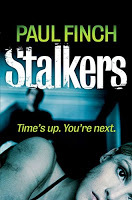 Well … in
ASHES TO ASHES
, after five books (some of which are pictured left), we finally get to the truth of it. Before this novel commences, Heck has occasionally had cause to visit Bradburn during his career. He has managed, to a degree, to patch up his relationship with his sole surviving close-relative, his older sister, Dana, but there are others who still regard him as a despicable traitor. As such, in
ASHES TO ASHES
, when pursuing a professional torturer now believed to be participating in a gang war in Bradburn, he has no option but to pitch camp in his old town, Heck won’t just be forced to confront the different deranged killers employed by the various gangs, but also his own demons … which, once and for all, will see him expose the root-cause of the immense, life-changing decision he made all those years ago.
Well … in
ASHES TO ASHES
, after five books (some of which are pictured left), we finally get to the truth of it. Before this novel commences, Heck has occasionally had cause to visit Bradburn during his career. He has managed, to a degree, to patch up his relationship with his sole surviving close-relative, his older sister, Dana, but there are others who still regard him as a despicable traitor. As such, in
ASHES TO ASHES
, when pursuing a professional torturer now believed to be participating in a gang war in Bradburn, he has no option but to pitch camp in his old town, Heck won’t just be forced to confront the different deranged killers employed by the various gangs, but also his own demons … which, once and for all, will see him expose the root-cause of the immense, life-changing decision he made all those years ago. And of course, not unusually for the Heck novels, it’s no easy path getting there. I’ve gone all out to lace this sixth outing with thrills, chills and violence aplenty as he works his way to a solution, encountering almost every kind of viciousness and villainy en route, whilst seeing a home-town that is all but burning around him.
And of course, not unusually for the Heck novels, it’s no easy path getting there. I’ve gone all out to lace this sixth outing with thrills, chills and violence aplenty as he works his way to a solution, encountering almost every kind of viciousness and villainy en route, whilst seeing a home-town that is all but burning around him. This is one aspect of the book that has already been noted by several reviewers. I particularly like this one in SHOTS MAGAZINE .
If you haven’t got time to pop over there and read it all, reviewer Gwen Moffat gives us a flavour of it, when she writes of Bradburn:
This city, once prosperous, is floundering in the grip of a crime wave. Gang warfare is threatened between an old firm under an established godfather, and a splinter group led by a vicious but charismatic young tearaway. Sagan, employed by the godfather, tips the balance but The Incinerator is a great leveller. And there are the Russians: fearsome jokers in the pack, the Tartarstans from St Petersburg who know no rules. The dilemma facing the cops is a choice between allowing the villains to destroy each other (with all the collateral damage to the citizens) or to find some way to save the city from anarchy.
It’s also summed up very nicely by Wendy of LITTLE BOOKNESS LANE , with:
Ashes to Ashes is uncompromisingly grisly, releasing fearsome opponents from every conceivable angle. Its furious, violent encounters creep a little close to home for our rebellious hero, who relies on gut instinct, backed up by a wing and a prayer. The author makes full use of urban landscapes which become a playground for some ‘killer’ games to be factored in. It has all the intensity that unrestrained action and carnage could possibly deliver.
It’s probably true to say that ASHES TO ASHES is probably a tad more violent than previous books in the Heck canon (though not a great deal, I don’t think). But I make no apologies for that. This is a battle fought on Heck’s home turf, and as we know, those are always the most viciously contested. It’s also a battle he has to wage against two different but deadly enemies both at the same time, in which case it’s surely understandable that he must fall back on the most extreme methods possible.
Anyway, you’ll have to judge for yourselves. ASHES TO ASHES is published on April 6. That’s Thursday this week. Hope you feel like visiting your local bookshop and seeing what all the fuss is about.
*
THRILLERS, CHILLERS, SHOCKERS AND KILLERS
An ongoing series of reviews of dark fiction (crime, thriller and horror novels) – both old and new – that I have recently read and enjoyed. I’ll endeavour to keep the SPOILERS to a minimum; there will certainly be no given-away denouements or exposed twists-in-the-tail, but by the definition of the word ‘review’, I’m going to be talking about these books in more than just thumbnail detail, extolling the aspects that I particularly enjoyed … so I guess if you’d rather not know anything at all about these pieces of work in advance of reading them yourself, then these particular posts will not be your thing.
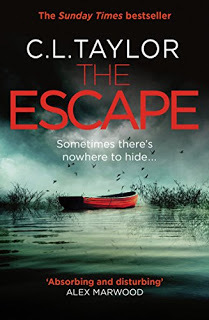 THE ESCAPE
THE ESCAPE by C.L. Taylor (2017)
Bristol wife and mother, Jo Blackmore, is struggling desperately with her nerves. Bereaved of her first child, Kevin, when he was still a baby, she struggles constantly with depression, and even though she now has another youngster, two-year-old Elise – a happy and healthy child – she is anxious, paranoid and increasingly suffers from agoraphobia.
In this regard, her once-loving husband, Max, is neither use nor ornament. A successful investigative reporter, he’s long felt that his job needs more attention than his family does, and despite Jo’s ailing mental condition, increasingly displays annoyance and frustration with her rather than affection. The twosome are certainly growing apart, but it finally comes to a head when Jo is one day fooled into giving a ride to a blonde-haired woman known only as Paula, who, once she’s in the car, demonstrates an in-depth knowledge of the Blackmores’ personal lives and makes vicious threats.
Jo and Elise emerge unscathed from the incident, but Jo is terrified, and so when Max responds with near indifference, the rift between them widens dramatically … especially as the mysterious Paula now upgrades her campaign of harassment, menacing the fragile Jo at every opportunity. Even when Paula finally reveals that this is all about Max, who apparently owes her something he plainly won’t give, he is blasé about the problem, dismissing the blonde tormentor as a fantasist or mental case, and refusing to entertain the possibility that she may be someone from his past.
Furious to be getting no support from her husband at a time when she needs it more than ever, Jo decides to leave, and starts making secret plans to take Elise to her parents’ home in Cheshire. But this decision, though it affords Jo some relief from her turmoil, and to all intents and purposes has been made in complete privacy, now seems to trigger a whole new wave of ever-more frightening events, which involve, among other things, house-breaking and violent assault.
And at no stage is Jo able to draw reassurance from law-enforcement, because no-one actually believes that she is being persecuted, the Social Services, who have been craftily and nastily manipulated, wondering if Jo, with her history of mental instability, might not be a fit and proper person to look after the one light in her life, Elise. Max, who now feels openly betrayed by his wife, continues to be as unhelpful as possible, prompting Jo to wonder if he too has some kind of agenda.
Eventually, with scarcely a friend in the world to turn to, and growing threats on all sides, the embattled young mother opts to put her child in the car and simply go on the run. It seems unlikely that she’ll find any refuge in the UK, so she heads overseas to the land of her mother’s birth, Ireland.
But even over there, things are not all they may be. Despite the picturesque surroundings of Clogherhead in County Louth, the ever beady-eyed landlady, Mary Byrne, is also a woman with secrets, while the mere fact that Jo’s family originated around here seems to arouse some latent hostility.
Meanwhile, the danger that Jo felt creeping up on her in the UK hasn’t gone away, and it isn’t long before it crosses the Irish Sea in pursuit of her …
C.L. Taylor is fast emerging as the queen of British domestic noir. With such tales of homespun terror as The Missing and The Accident already under her belt, she now hits us with another one, and in her own inimitable style, manages to make even the seemingly safest of places – leafy Middle England – into a suburban minefield.
I should say from the outset that there are no extremes of horror in this book. We’re not dealing with massacres, rape or rampant child-abuse. But in many ways, The Escape is more subtly harrowing than any of those. Because the enemies here, at least for a good part of the novel, are the very institutions that are supposed to be there to help – they are especially supposed to help people like Jo Blackmore, a woman of good character but emotionally distraught to the point where many aspects of ordinary life are too much for her.
This is brave writing by Taylor. So often in thriller fiction, as in real life in fact, the police, the social services (even the nursery school establishment, for Heaven’s sake!), are firmly with the good guys, but so cleverly constructed is this story, and at the same time so skewed is the reality of things when viewed through the prism of mild mental illness, that they are here projected in a very different light. Jo Blackmore wants nothing more than to be able to live her life and raise her daughter, with or without her self-centred husband – which part of it is very much up to him. Yet there are so many implacable forces ganging up against her; and who the hell do they think they are, anyway, to interfere in the way she conducts her own affairs and raises her own little girl!
I should hastily add that the caring establishment is not the arch-enemy here, but it does present Jo with a wall of faceless and frightening bureaucracy, which not only must she somehow get over in order to find her freedom, but which is also doing a very effective job of shielding the real villains, though needless to say – and what a surprise this isn’t! – it doesn’t prove very effective in preventing them from striking at her.
I don’t think I’ve ever read another book in which the innocent were so up against it as Jo Blackmore is here. There is very little brutality in The Escape , the unfairness Jo faces in this tale is a monster in itself – not that this stops you wondering from time to time if maybe, just maybe, she has finally succumbed to her demons and the fault may lie with her after all. But that’s a question you can only find an answer to by reading the book. And this is another aspect of C.L. Taylor’s thrillers for which she is rightly lauded: the psychological questions she poses. From the very start, we are informed that Jo Blackmore is battling with post-natal depression. But just how far has it actually gone? Could it be that she is seriously mentally ill? How do we know what is real and what isn’t?
This delightful twisty element, which is masterfully blended into the narrative, gives The Escape a real Hitchockian aura, which when you consider that it’s a consciously low-key mystery-thriller – as I say, a ‘domestic noir’ – shows how effectively written it is.
A big book, but a quick read. Another of those famous page-turners. You won’t be disappointed.
And now, as usual, I’m going to be cheeky enough to suggest my own cast should The Escape ever make it to the screen, and given network television’s current fascination with the ups and downs and ins and outs of modern middle-class life, particularly when there’s a darker edge to it, I reckon this one would be idea. Anyway, here we go:
Jo Blackmore – Eleanor TomlinsonMax Blackmore – Ioan GruffudPaula – Amanda AbbingtonMary Byrne – Sinead Cusack
Published on April 04, 2017 02:24
March 16, 2017
In your face crime and grime, British style
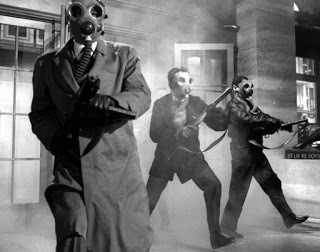 This week we’re on the dark, rain-wet streets and grimy urban landscapes of the British crime thriller. Firstly, because we yet again are going to be talking about my forthcoming new release, ASHES TO ASHES, which is now only four weeks away. Secondly, because I thought this would be an opportune time to pick out and highlight the TEN BEST BRITISH CRIME MOVIES YOU’VE POSSIBLY NOT SEEN, and thirdly, because I’m also going to be reviewing and discussing Mark Roberts’s gritty and tension-riddled, Liverpool-set crime novel, DEAD SILENT.
This week we’re on the dark, rain-wet streets and grimy urban landscapes of the British crime thriller. Firstly, because we yet again are going to be talking about my forthcoming new release, ASHES TO ASHES, which is now only four weeks away. Secondly, because I thought this would be an opportune time to pick out and highlight the TEN BEST BRITISH CRIME MOVIES YOU’VE POSSIBLY NOT SEEN, and thirdly, because I’m also going to be reviewing and discussing Mark Roberts’s gritty and tension-riddled, Liverpool-set crime novel, DEAD SILENT.As always, that book review can be found at the lower end of today’s post. In the meantime, as mentioned above, ASHES TO ASHES, the sixth DS Mark ‘Heck’ Heckenburg novel, is due to hit the bookshelves on April 6. This time, we’re taking the lonely hero home to Bradburn, the Lancashire mill-town where he was born and raised, and which has haunted him all his life because of certain dreadful things that happened there.
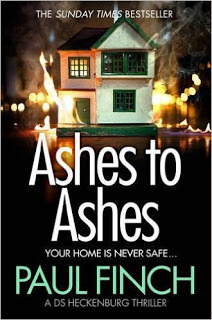 But in
ASHES TO ASHES
, Heck goes back to Bradburn not so much unwillingly – he never likes returning ‘home’ – but determinedly, because the town of his birth is now overrun by criminals and drug-addicts, and at the same time being terrorised by two rival killers, who seem to be running up scorecards of victims in defiance of each other. And these are not run-of-the-mill stranglings or throat-cuttings. One of the killers is a professional torturer, who uses the most ingenious and protracted methods to despatch his subjects, while the other, known by the press as ‘the Incinerator’, wears heavy body-armour and wields a flame-thrower.
But in
ASHES TO ASHES
, Heck goes back to Bradburn not so much unwillingly – he never likes returning ‘home’ – but determinedly, because the town of his birth is now overrun by criminals and drug-addicts, and at the same time being terrorised by two rival killers, who seem to be running up scorecards of victims in defiance of each other. And these are not run-of-the-mill stranglings or throat-cuttings. One of the killers is a professional torturer, who uses the most ingenious and protracted methods to despatch his subjects, while the other, known by the press as ‘the Incinerator’, wears heavy body-armour and wields a flame-thrower.Yes, it gets nasty … which has often been a hallmark of British crime fiction, and especially British crime movies.
By their very nature, I’ve long found these a fascinating animal. Certainly, up until the more recent age of the mockney/cockney antics we started seeing in romps like Lock, Stock and Two Smoking Barrels(1998), Layer Cake (2004) and Sexy Beast (2000), British crime cinema took its main inspiration from the American noirs of the 1940s, telling dour, downbeat tales of weary individuals trying to forge their way through cities blighted by squalor and vice, featuring lead-characters – be they cops, PIs, or even villains – who were often no better than they had to be, establishments that were inherently corrupt, and an underworld that was all-consuming.
The tone was bleak throughout, and they rarely ended well.
Most students of the genre will be familiar with the classics in this field. Brighton Rock (1947), Get Carter (1971) and the Long Good Friday (1980) are still in many ways the benchmark, but it also seems to me that there has been a whole swathe of British crime thrillers which rarely get a mention these days, and yet which tick all the boxes and stand up very well indeed.
And so here, just for the fun of it, and in no particular order, are …
THE TEN BEST BRITISH CRIME MOVIES YOU’VE POSSIBLY NOT SEEN:
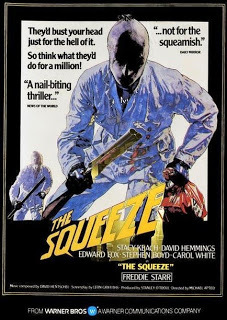 The Squeeze (1977): Alcoholic Scotland Yard detective Stacy Keach has to throw off the DTs when his ex-wife is kidnapped by gangsters as part of a plan to pull a massive heist. Stephen Boyd and David Hemmings add kudos as the lead blaggers.
The Squeeze (1977): Alcoholic Scotland Yard detective Stacy Keach has to throw off the DTs when his ex-wife is kidnapped by gangsters as part of a plan to pull a massive heist. Stephen Boyd and David Hemmings add kudos as the lead blaggers.The Reckoning (1969): Nicol Williamson is the northern-born executive, successful at business, but whose inner loutishness isolates him from the London middle-classes. When his elderly father is beaten to death by Hell’s Angels, he heads back home looking for revenge.
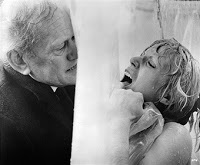 The Internecine Project (1974): James Coburn is the London-based spy chief, who opts to clean house by arranging for his operatives to kill each other all on the same night. Rousing support from a cast of old reliables like Ian Hendry, Harry Andrews (left), Lee Grant and Michael Jayston.
The Internecine Project (1974): James Coburn is the London-based spy chief, who opts to clean house by arranging for his operatives to kill each other all on the same night. Rousing support from a cast of old reliables like Ian Hendry, Harry Andrews (left), Lee Grant and Michael Jayston.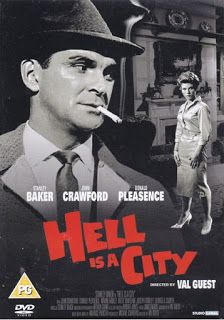 Hell is a City
(1960)
: Manchester DI Stanley Baker’s life falls apart as he goes all out to catch an old lag who has busted out of jail and is determined to reclaim the loot from his last job. Brit noir at its most intense, at the dawn of the swinging 60s.
Hell is a City
(1960)
: Manchester DI Stanley Baker’s life falls apart as he goes all out to catch an old lag who has busted out of jail and is determined to reclaim the loot from his last job. Brit noir at its most intense, at the dawn of the swinging 60s.The Offence (1973): Detective Sergeant Sean Connery struggles to contain his inner beast when he collars suspected child molester, Ian Bannen. Trevor Howard and Peter Bowles are his fellow detectives. Unrelentingly bleak cop drama, way ahead of its time.
Villain (1971): Vicious East End gang boss Richard Burton over-extends his reach when he joins forces with a rival firm who neither trust nor like him. Ian McShane is the underworld fixer who can’t prevent his gaffer from making this final, fatal mistake.
Sitting Target (1972): Psychotic killer Oliver Reeds busts out of prison, but eschews the escape route his gang have laid out, by looking to get even with the wife who betrayed him. Edward Woodward is the cop determined to nail him.
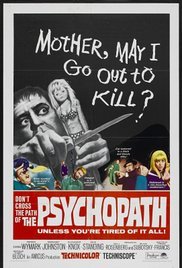 The Psychopath (1966): London cops investigate a string of murders in which the horribly mutilated victims all have dolls left by their corpses. Blood and guts from the ‘Pan Horror’ era of crime thrillers. Patrick Wymark is the DI with the least enviable job in town.
The Psychopath (1966): London cops investigate a string of murders in which the horribly mutilated victims all have dolls left by their corpses. Blood and guts from the ‘Pan Horror’ era of crime thrillers. Patrick Wymark is the DI with the least enviable job in town.Eastern Promises (2007): Midwife Naomi Watts falls fouls of the Russian Mafia when she comes into possession of a baby, the mere existence of which proves they are trafficking underage prostitutes into the UK. Vincent Cassel and Viggo Mortensen are the menacing mobsters.
The League of Gentlemen (1960): A bunch of former WWII commandos, unable to reintegrate into society, reconvene to carry out a complex and violent bank robbery (pictured top). A host of classy talent includes Jack Hawkins, Bryan Forbes and Richard Attenborough.
THRILLERS, CHILLERS, SHOCKERS AND KILLERS …
An ongoing series of reviews of dark fiction (crime, thriller and horror novels) – both old and new – that I have recently read and enjoyed. I’ll endeavour to keep the SPOILERS to a minimum; there will certainly be no given-away denouements or exposed twists-in-the-tail, but by the definition of the word ‘review’, I’m going to be talking about these books in more than just thumbnail detail, extolling the aspects that I particularly enjoyed … so I guess if you’d rather not know anything at all about these pieces of work in advance of reading them yourself, then these particular posts will not be your thing.
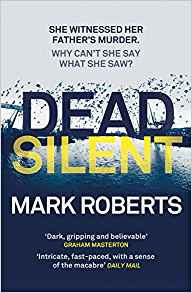 DEAD SILENT
DEAD SILENT by Mark Roberts (2016)
Liverpool in the depths of December. Christmas is approaching, but there is little joy to be had in the Sefton Park district of the wintry city.
DCI Eve Clay and her team of experienced homicide investigators are baffled and horrified when they are called to the murder of retired octogenarian college professor, Leonard Lawson, an expert in medieval art. To make the case even more disturbing, Lawson, who was ritually slaughtered inside his own home and then fastened to a stake in the fashion of a game-animal, was discovered by his daughter, Louise, an ageing and rather fragile lady herself, who is so shocked by the incident that she can barely even discuss it.
This resolute silence, whether it’s a natural reaction to the horror of the incident, or something more sinister – and Clay is undecided either way – impedes the police, who are keen to delve into the victim’s past, not to mention his current circle of acquaintances, to try and work out who might harbour such a grudge that they would inflict such sadistic violence on him.
At least Clay can call upon a considerable amount of expertise. DS Bill Hendricks is her strong right-arm, and a no-nonsense but deep-thinking copper who knows his job inside out. DS Gina Riley is the softer face of the job, another experienced detective but a gentle soul when she wants to be, and very intuitive. Meanwhile, DS’s Karl Stone and Terry Mason are each formidable in their own way, as are the various other support staff the charismatic DCI can call upon.
With such power and knowledge in her corner, it isn’t long before Clay is making progress, a matter of hours in fact, though the mystery steadily deepens, leading her first to a care home for mentally disabled men (including the likeable, innocent Abey), and yet run by the non-too-pleasant Adam Miller and his attractive if weary wife, Danielle (who may or may not be more than just a colleague to the young, modern-minded carer, Gideon Stephens).
Yes, it seems as if there are mysteries within mysteries to be uncovered during this investigation. However, Clay and her crew continue to make ground, finally becoming interested in Gabriel Huddersfield, a disturbed loner who haunts the park and makes strange and even menacing religious speeches, and being drawn irresistibly towards three curious if time-honoured paintings: The Last Judgement by Hieronymous Bosch, and The Tower of Babel and The Triumph of Death by Pieter Bruegel.
These garish Renaissance masterpieces were all regarded at the time, and by modern scholars, as instructions for the benefit of mankind, giving warnings about his fate should he stray from the path of righteousness, each one incorporating terrifying and brutal imagery in order to deliver its fearsome message.
But even though these objects inform the case, and Clay and her team soon develop suspects, the enquiry continues to widen. What role, for example, does the rather strange character who was the late Professor Noone have to play in all this, and what exactly was the so-called ‘English Experiment’? All we know about it initially is that it wasn’t very ethical and that it somehow involved children.
Clay herself becomes emotionally attached to the case, its quasi-religious undertones affecting her more and more, because, as a childhood orphan, she was raised by Catholic nuns, though in her case – and this makes a welcome change in a work of modern fiction – it wasn’t all negative; Clay owes her empathetic nature to the love and affection she received from her guardian, Sister Philomena, while the tough but kindly Father Murphy recognised and nurtured the spark of leonine determination that would go on to gird her greatly for the challenging paths ahead.
But all this will be rendered null and void of course if the Selfton Park murderer is not apprehended quickly. Because, almost inevitably, he now strikes again, committing two more equally horrific ritualistic slayings.
Clay and her team find themselves racing against time to end this ghastliness, a race that takes them into and around some very notable Liverpool landmarks, the city’s two great cathedrals for example, and all along the snowy, slushy banks of the Mersey (all of which are generously mapped out for us). And all the while, they become ever more aware that this is no ordinary level of depravity they are dealing with. Nor is it necessarily the work of a single killer. Who, for example, is ‘the First Born’, and who is the ‘Angel of Destruction’? Whoever these ememies of society actually are, however many they number, and whatever their crazed, fervour-driven motives, it soon becomes apparent that they are just as likely to be a threat to the police hunting them as they were to those victims they have already butchered …
Dead Silent is the second Eve Clay novel from Mark Roberts, and a pretty intriguing follow-up to the original outing, Blood Mist.
From the outset, the chilly urban setting is excellently realised. You totally get the feeling that you’re in a wintry Liverpool, the bitter cold all but emanating from its pages, the age-old monolithic structures of the city’s great cathedrals standing stark and timeless against this dreary backdrop, the gloomy greyness of which is more than matched by the mood; the murder detectives certainly have no time for the impending fun of Christmas as they work doggedly through what is basically a single high-intensity shift, pursuing a pair of truly malign and murderous opponents.
And that’s another vital point to make. Dead Silent is another of those oft-quoted ‘page-turners’, but in this case it’s the real deal – because it practically takes place in real time.
The enquiry commences at 2.38am on a freezing December morning, and finishes at 8.04pm that night, the chapters, each one of which opens helpfully with a time-clock, often arriving within a few minutes of each other. This is a clever device, which really does keep you reading, especially as almost every new chapter brings another key development in the multi-stranded tale.
If this sounds as though Dead Silent is exclusively about the enquiry, and skimps on any additional drama or character development, then that would be incorrect. It is about the enquiry – this is a murder investigation, commencing with a report that an apparently injured party is walking the streets in a daze, and finishing with a major result for the local murder team (and a twist in the tale from Hell, a shocker of an ending that literally hits you like a hammer-blow!), with very few events occurring in between that aren’t connected to it. However, the rapid unfolding of this bewildering mystery, and the warm but intensely professional interplay between the various detectives keeps everything rattling along.
Because this is a highly experienced and very well-oiled investigation unit, each member slotting comfortably and proficiently into his or her place, attacking the case on several fronts at once, and yet at the same time operating as a super-efficient whole, of which DCI Eve Clay is the central hub.
This kind of arrangement is replicated in big city police departments across the world, and is usually the reason why mystifying murders are reported on the lunchtime news, only for the arrest of a suspect to be announced by teatime. As an ex-copper, it gave me a real pang of pleasure to see one of the main offenders here, a cruel narcissist and Pound Shop megalomaniac, expressing dismay and disbelief when he learns how quickly he is being closed down.
And yet, Mark Roberts doesn’t just rush us through the case. He also gives himself lots of time to do some great character work.
As previously stated, Eve Clay is the keystone, the intellectual and organisational force behind the team’s progress, but at the same time, while a mother back at home, also a mother to her troops, someone they can confide in when they have problems, but also someone they have implicit faith will lead them from one success to the next. What is really fascinating about Clay, though, is the way her difficult childhood in a Catholic orphanage has strengthened her emotionally and gifted her with a warmth the likes of which I’ve rarely seen in fictional detectives (and which, at times, is genuinely touching). She makes a fine if unusual hero.
To avoid giving away too many spoilers, I must, by necessity, avoid discussing the civilian characters in the book, except to say that Mark Roberts takes a cynical but perceptive view of the kind of people police officers meet when investigating serious crime.
Ultimately, all those involved in this case, even if only on the periphery, are abnormal in one way or another, while those at the heart of it … well, suffice to say that some kind of insanity is at work here. Because surely only insanity, or pure evil, or a combination of both, can lie at the root of murders like these. Roberts investigates this wickedness to a full and satisfying degree, completely explaining – if not excusing – the terrible acts that are depicted, and yet at the same time using them to underscore the dour tone of the book. On reflection, there is nothing particularly extravagant or outlandish about the villains in Dead Silent , even if they do commit horrific and sadistic murders. They may be depraved, but there is still an air of the kitchen sink about them, of the mundane, of the self-absorbed losers that so many violent sexual criminals are in real life – again, this adds a welcome flavour of the authentic.
To finish on a personal note, I also loved the arcane, artistic elements in the tale. Again, I won’t go into this in too much detail, but I’ve long been awe-stricken by messianic later-medieval painters like Hieronymus Bosch and Pieter Bruegel. Though replete with multiple meanings, their lurid visions of Hell and damnation, of a world gone mad (or maybe a world born mad!), are among the most memorable and disturbing ever committed to canvas. It’s distressing to consider that such horror derived from men of artistry and intellect, but then to see these ancient atrocities interwoven with latter-day insanities like the English Experiment (which again has emerged from men with talent and education!), is fascinating, and as far as I’m concerned, it gives this novel a richness of aura and depth of atmosphere that I’ve rarely encountered in crime fiction.
Read Dead Silent . It’s a class act.
And now, as always at the end of one of my book reviews, I’m going to be bold (or foolish) enough to propose a cast should Dead Silent ever make it to the screen, though most likely that would only happen if Blood Mist happened first. Nevertheless, here are my picks:
DCI Eve Clay – Claire Sweeney DS Gina Riley – Tricia PenroseDS Bill Hendricks – Liam CunninghamDanielle Miller – Cathy Tyson Adam Miller – Paul McGann Gideon Stephens – Tom HughesLouise Lawson – Alison SteadmanLeonard Lawson – Malcom McDowellDS Karl Stone – Stephen GrahamDS Terry Mason – Joe DempsieGabriel Huddersfield – Luke TreadawayAbey – Allen Leech
Published on March 16, 2017 03:07
March 9, 2017
Fancy a little touch of terror in the night?
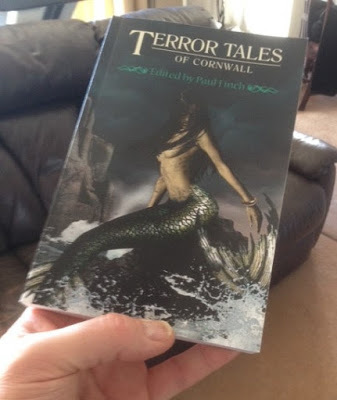 I’m pleased to be able to report that the TERROR TALES series is back on track. If you look left, you’ll see that the final proof of TERROR TALES OF CORNWALL has arrived.
I’m pleased to be able to report that the TERROR TALES series is back on track. If you look left, you’ll see that the final proof of TERROR TALES OF CORNWALL has arrived. After months of unavoidable delays and disruption, it suddenly feels very real again.
I’ll fill you in on the latest situation a bit further down in today’s post. Very relevantly to this, I’ll also be offering a detailed discussion and review of Reggie Oliver’s amazing novel, THE DRACULA PAPERS – it’s relevant because a new story by Reggie appears in the Cornwall book, but also because it’s horror and horror is the theme of the day.
But as usual, you’ll be able to find that review at the lower end of today’s post. If you’re happy to stick around here a little while first, there are some other bits and bobs to talk about ...

First of all, I’ll be appearing at the Mill Forge Hotel, just outside Gretna Green, this coming Saturday (March 11) as part of the CRIME AND PUBLISHMENT weekend, to make a presentation and talk animatedly (at least, I hope I'll be animated) about HOW TO PUT HORROR INTO YOUR CRIME WRITING.
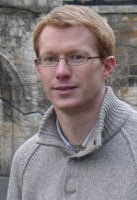
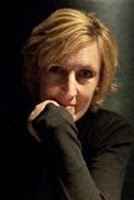 I won’t be the only attraction at the Mill Forge this weekend, of course.
LIN ANDERSON
(left) will be there to talk about the use of forensics, and TOM HARPER (right) to discuss suspense, among several other immeasurable talents.
I won’t be the only attraction at the Mill Forge this weekend, of course.
LIN ANDERSON
(left) will be there to talk about the use of forensics, and TOM HARPER (right) to discuss suspense, among several other immeasurable talents.My own subject was chosen for me by GRAHAM SMITH , Mill gaffer and crime-writer extraordinaire, so I owe him a big debt of thanks for that. He was very keen to hear me impart any wisdom I may have gleaned during my gradual transformation over the years from horror writer to crime novelist.
I will admit, I was a bit nervous initially. My two-and-a-half hour slot is considerably longer than any previous slot of this sort that I’ve been allocated, but I think (hope, pray!) that I’ll have prepped my stuff sufficiently to make this an interesting time for all those planning to attend.
If you are heading to the Mill this weekend, I look forward to seeing you. And if you’re a regular on this blog, or on Facebook or Twitter, or whatever, please introduce yourself to me. It’s always great to put names to faces.
Now … onto the subject of the TERROR TALES books.
It was a personal mission of mine for several years to edit anthologies of original horror fiction, specifically in reference to folklore, mythology and real-life paranormal or occult-related mysteries, of which we have an absolute plethora here in the UK.
The result was the TTs, as I like to call them.
Originally published by the late lamented Gray Friar Press, the series started out spiffingly with TERROR TALES OF THE LAKE DISTRICT and then ran on through THE COTSWOLDS , EAST ANGLIA , LONDON , THE SEASIDE , WALES , YORKSHIRE , THE SCOTTISH HIGHLANDS and THE OCEAN (yes, we’ve gone further and further afield the deeper into it we delved – it quickly became apparent to me that there were plenty other places in the world replete with eeriness and the arcane, so it was never the plan to draw the line once we’d covered the UK … not that we’re even close to that yet).
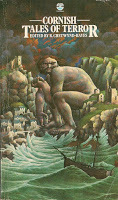 My motivation behind each book was not just to tell a bunch of scary stories from a particular geographic region, but to try and tap the zeitgeist of that district; to really get a feel for its culture and beliefs, its legends and curiosities.
My motivation behind each book was not just to tell a bunch of scary stories from a particular geographic region, but to try and tap the zeitgeist of that district; to really get a feel for its culture and beliefs, its legends and curiosities.As such, taking a leaf out of R. Chetwynd-Hayes’s TALES OF TERROR series from the 1970s, as published by Fontana, I opted to intersperse the fictional stories with non-fictional anecdotes – true terror tales if you like, supernatural occurrences, bizarre mysteries, horrific events, unexplained but ghastly crimes.
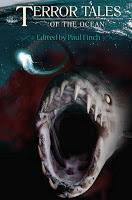 So for example, while in
TERROR TALES OF THE OCEAN
, we have Steve Duffy’s fictional account of a sea-rescue from Hell in ‘Lie Still, Sleep Becalmed’, we also examine the true life mystery of the Palmyra Atoll curse. Likewise, while in
TERROR TALES OF THE SCOTTISH HIGHLANDS
, we join Peter Bell on an ill-fated climbing expedition to a mountain-top rock form called ‘The Executioner’, we also investigate the incredible true facts in the case of the killer and cannibal, Tristicloke the Wolf.
So for example, while in
TERROR TALES OF THE OCEAN
, we have Steve Duffy’s fictional account of a sea-rescue from Hell in ‘Lie Still, Sleep Becalmed’, we also examine the true life mystery of the Palmyra Atoll curse. Likewise, while in
TERROR TALES OF THE SCOTTISH HIGHLANDS
, we join Peter Bell on an ill-fated climbing expedition to a mountain-top rock form called ‘The Executioner’, we also investigate the incredible true facts in the case of the killer and cannibal, Tristicloke the Wolf.This format was replicated throughout the series, and went on to win quite a bit of praise from various corners.
Anyway, as many are now probably aware, early last year, when half way through production of the 10th book in the series, TERROR TALES OF CORNWALL, the publisher, Gray Friar, through no fault of their own, were forced to cease trading. It was a sad event in the independent press, not just because of the TTs, but because GF had been a hugely productive outfit and a very adventurous publisher of British weird fiction.
All good things come to an end, but I was determined that TERROR TALES was going to continue. I needed to look around for a new publisher of course, and this coincided with the ever more time consuming process of writing of my own crime novels, which seemed to reduce the hours available to the bare minimum.
But despite this, we’ve got there in the end.
The new book is coming out from TELOS PUBLISHING , a hugely well-regarded independent publisher here in the UK. And it’s with every likelihood, and a firm intention on both our parts, that more volumes will follow.
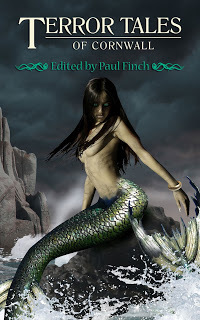 But don’t just take my word for it. As you saw above, the final proof of TERROR TALES OF CORNWALL arrived at my office only yesterday.
But don’t just take my word for it. As you saw above, the final proof of TERROR TALES OF CORNWALL arrived at my office only yesterday.So yes, after a long hiatus, the series is finally up and running again.
We don’t have an actual publication date or pre-order page as yet, but if you keep your eyes glued to this blog, Facebook, Twitter etc, I shall endeavour to post that information as soon as I get it, along with the full jacket, including the back-cover blurb, and a detailed table of contents.
THRILLERS, CHILLERS, SHOCKERS AND KILLERS
An ongoing series of reviews of dark fiction (crime, thriller and horror novels) – both old and new – that I have recently read and enjoyed. I’ll endeavour to keep the SPOILERS to a minimum; there will certainly be no given-away denouements or exposed twists-in-the-tail, but by the definition of the word ‘review’, I’m going to be talking about these books in more than just thumbnail detail, extolling the aspects that I particularly enjoyed … so I guess if you’d rather not know anything at all about these pieces of work in advance of reading them yourself, then these particular posts will not be your thing.
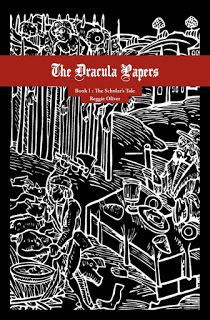 THE DRACULA PAPERS #1:
THE DRACULA PAPERS #1:
THE SCHOLAR’S TALE
by Reggie Oliver (2011)
In the mid-16th century, Prince Vladimir Dracul of Transylvania, son of the vain and greedy king, Xantho, commences his rise to prominence as ‘the Impaler’ and in due course as ‘Dracula the Vampire’, through a series of violent, hair-raising adventures, an intense love affair and a succession of bizarre supernatural events.
All of this is observed and, in fact, noted down and related to us in diary form by the German scholar, Doctor Martin Bellorious, who at the start of this book, along with his companions, sly alchemist-in-training Matthew Verney and good-natured dwarf, Razendoringer, flees the University of Wittenberg before a heresy charge can be levelled, and heads east through ever more dangerous territories.
It is already difficult to say much more about this astonishing narrative, because almost from the word-go, amazing, delightful and crucially important plot-developments occur – and continue to occur at a rate of at least one a chapter. Suffice to say that this is Europe of the 1570s, a vast, desolate, largely lawless land, where bandits haunt the highways, wolves fill the forests, armies wage endless internecine warfare, noblemen rule as crazy despots, black magic is very, very real and, when night falls, all kinds of evil supernatural beings walk abroad.
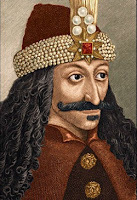 Even before Bellorious and his friends reach the ‘safety’ of Castle Dracula, they have several hair-raising escapades in this torturous land of far beyond, narrowly avoiding nasty fates at the hands of various antagonists, including, among several others, two ogre-like cannibals and then Rudolph, the unhinged ruler of Bohemia. And when the dauntless band makes it to Transylvania and then into Castle Dracula, they find themselves immersed in the cutthroat politics of Xantho’s Machiavellian court.
Even before Bellorious and his friends reach the ‘safety’ of Castle Dracula, they have several hair-raising escapades in this torturous land of far beyond, narrowly avoiding nasty fates at the hands of various antagonists, including, among several others, two ogre-like cannibals and then Rudolph, the unhinged ruler of Bohemia. And when the dauntless band makes it to Transylvania and then into Castle Dracula, they find themselves immersed in the cutthroat politics of Xantho’s Machiavellian court.For example, despite a straightforward appointment to school rival princes Vlad (pictured above in his more famous later guise) and Mircea, Bellorious soon earns the enmity of the ambitious chamberlain, Alexander of Glem, who constantly puts dangers and difficulties in his path, he learns unsavoury things about Queen Eupraxia – things which could easily get him killed, he discovers that Xantho is more interested in acquiring wealth and in mocking his gibbering courtiers than he is in organising matters of state, and he struggles to educate Prince Mircea, whose main interests are guzzling wine and ravishing servant girls.
At the same time, there are countless weird and wonderful things in Castle Dracula. From complete absurdities – like a mechanical eating machine which Xantho forces upon one of his boyar flatterers; to the highly distasteful – like the deranged courtier who lives on a diet of spiders, cockroaches and other vermin; to the truly terrifying – like the vampiristic ghost said to roam the Old Queen’s apartments and the tribe of madmen living in the deepest, most forgotten parts of the castle dungeons.
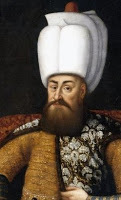 Unfortunately for Bellorious, he doesn’t have much time to explore properly in order to assess these curiosities. Because all the time this is happening, the legions of Murad III (right), Sultan of the immense Ottoman Empire, are massing on the border under the super-efficient leadership of the ferocious Turkish warrior, Grand Vizier Sokolly. Despite the warnings of Ragul, Xantho’s illegitimate son and commander-in-chief of his armed forces, Xantho is strangely unconcerned about any this, so when the attack finally arrives it does so with overwhelming force. By this time, Bellorious has enlightened Prince Vlad sufficiently for him to realise that his homeland is in very serious trouble, and the noble youth participates in the following campaign with almost reckless courage. But both he and his teacher are aware from an early stage that victory, ultimately, is going to elude them, even if it is wrested away from them by skillful negotiation rather than bloody conflict.
Unfortunately for Bellorious, he doesn’t have much time to explore properly in order to assess these curiosities. Because all the time this is happening, the legions of Murad III (right), Sultan of the immense Ottoman Empire, are massing on the border under the super-efficient leadership of the ferocious Turkish warrior, Grand Vizier Sokolly. Despite the warnings of Ragul, Xantho’s illegitimate son and commander-in-chief of his armed forces, Xantho is strangely unconcerned about any this, so when the attack finally arrives it does so with overwhelming force. By this time, Bellorious has enlightened Prince Vlad sufficiently for him to realise that his homeland is in very serious trouble, and the noble youth participates in the following campaign with almost reckless courage. But both he and his teacher are aware from an early stage that victory, ultimately, is going to elude them, even if it is wrested away from them by skillful negotiation rather than bloody conflict.Only God knows – or maybe the Devil – what will happen to them after that …
It’s often said of Reggie Oliver that he is genre fiction’s best-kept secret. I have two immediate thoughts on that. First of all, it’s probably true. Secondly, if it is true it’s an absolute crime.
Oliver, who already had a successful career as an actor, theatre director, playwright and biographer before his writing took a distinctly darker turn in the early 2000s, is by far one of the most talented practitioners of spookiness currently working in the English language. It’s probably true to say that he first came to the literary horror world’s attention with a series of searingly frightening and at the same time very eloquent short stories – ghost stories on the surface, though often much deeper and more complex than that, strongly reminiscent of both M.R. James and Robert Aickman (if you can imagine such a thing!), and yet embracing every kind of nightmare in the weird fiction spectrum: from the restless dead to the demonic, from the spirits of myth to the often even worse aberrations of the human psyche, and invariably wrapping it all up in succinct, readable, and yet delightfully poetic prose.
Of course, not every expert in the short form is able to expand his skill into the much broader realm of the novel; the two disciplines don’t necessarily overlap. However, it was a joy (and somehow no surprise at all) to discover that this does not apply to Reggie Oliver, whose first novel, The Dracula Papers , is just as elegantly written, just as thought-provoking, just as shudder-inducing and just as much a pleasure and an entertainment as any of his short stories.
The first volume in a proposed trilogy studying the origins of Count Dracula the vampire, this is already a phenomenal feat of strange literature and though only one of three, a completely satisfying novel in its own right, which should appeal to a wide readership.
To begin with, The Dracula Papers isn’t specifically a horror novel, though there is much horror on show here: spine-chilling horror of the traditional ghost story variety on one hand, and sensual, shocking horror on the other – nothing explicit, though of such a lurid and Gothic tone that some of it wouldn’t be out of place in the old Dracula movies of the Hammer era. But in addition to all that, the book is written with such an air of authority, delving so deeply and fascinatingly into the culture of the time and place, touching on the many beliefs and philosophies prevalent in that age – everything from long-held superstitions, to late-medieval romances, to the intellectual chaos wrought by changing religion and advancing science – that it reeks of scholarship in its own right.
On top of that, it’s an historical saga on a grand but brutal scale. We see brandings, beheadings and impalements galore, a truly memorable scene wherein an avalanche of severed heads is launched over the walls of Castle Dracula by the besieging Turkish army, and one enormous battle which becomes a literal slaughterhouse.
Again, none of this is graphic or titillating, but it’s all there on the page – which only adds to the vivid portrayal of a terrible world now thankfully lost in time. And yet this itself is a kind of irony, because Oliver, rather bravely, makes no real effort to depict true historical events.
The Dracula Papers owes as much to folklore as it does to genuine history, and not a little amount to fiction. For example, the real Vlad Tepes and his brother, Mircea, lived in the 15th century not the 16th, there was no actual kingdom of Transylvania in this era, rather it was a principality of the kingdom of Hungary, while the lofty position the real Vlad aspired to was not as a king but as Prince of Wallachia, and Elizabeth Bathory (later known as ‘Countess Dracula’) who appears here renamed Nyela and as a deceased but murderess noblewoman of earlier decades, was not even born in 1477, when the real Vlad the Impaler died.
But none of this matters. In fact, it adds to the joy. Because what we’ve got here, rather than a textbook, is a richly-woven fabric of adult-themed fairy tales. For example, not even the well-educated and clear-minded Martin Bellorious thinks it odd that a local village is terrorised by a ‘murony’; in fact it is he who takes it on himself to dispose of the evil sprite. Rumours of the terrifying Black Cathedral – a secret university dedicated to the dark arts – are believed with absolute certainty. When Bellorious encounters Issachar, a vagrant claiming to be the Wandering Jew of apocryphal legend, he is honoured rather than doubtful. Likewise, when the Turkish sorcerer, Zushad, displays necromantic powers, Bellorious is only one of many fascinated witnesses to the dramatic and nightmarish outcome.
But this is not just a story about myths coming true. Oliver also presents us with the real, functioning and yet terribly unjust world of the Reformation, where the peasantry struggles annually for survival, monarchs seek only to enrich themselves, and seats of intellectualism like colleges and guilds are too busy arguing about heresy to care about everyday affairs. He also concerns himself with military matters. Eastern Europe is now under threat from the Ottomans, the gunpowder-capable armies of the Early Modern Age constantly redrawing the map as they manoeuvre around each other, feinting and sallying, and occasionally clashing full-on to spectacularly bloody effect. At the same time, courtly intrigue is everywhere, both in the magnificent Ottoman capital of Istanbul – ‘Stamboul’, as it is referred to here – but also in the Spartan confines of Castle Dracula, where such is the underhand scheming that no-one, not even Xantho’s unfaithful wife, Queen Eupraxia, feels totally safe.
This brings me onto the characters, which – even those who only make a fleeting appearance – are constructed by Oliver swiftly and yet in full, complex fashion.
Even though we’re immersed in the world of angels and demons, there are few individuals here who are all good and all bad. Bellorious himself makes a fine lead, though he’s very human. Despite his status, he is only in his late 20s, and yet throughout the narrative displays wisdom, probity and empathy – he only takes lives when he has to, and though he’s a scholar and in many ways, an ascetic, his lustful yearning for the beautiful slave-girl, Inanna, is almost painful.
Dracula himself – Vlad in this preliminary volume – though he starts off a wide-eyed youth and an eager student, soon gives hints that he has a darker side: he is petty, he sulks and he will kill in battle with what can only be described as gusto. In addition, he is instantly recognisable as the scion of a noble house, for though he is brave, handsome and dashing, he is also self-centred to an alarming degree.
Other characters are equally colourful, if more briefly handled. Matthew Verney is untrustworthy from the outset, but Oliver paints him slowly and with immense skill, transforming him from ambiguity to villainy with a pace so subtle that it consciously takes up the length of the novel. Others meanwhile are more bound by their stations in life: rival sovereigns, Murad and Xantho, and the latter’s son and heir, Mircea, are distinctly unimpressive men, undeserving of the life-and-death control they exert, and yet so bored by it all that they often neglect their responsibilities, allowing ambitious underlings like Sokolly and Alexander of Glem to grow in power. Meanwhile, below them, better people are eternally doomed by their subservient status: Commander Ragul takes his job seriously, but knows that ultimately he will fail because he lacks the support of his king, and he is very aware that he himself will pay for this failure; star-crossed lovers Razendoringer and dwarf lady-in-waiting Dolabella, though spirited individuals of many talents, will always be servants and/or buffoons because they are dwarfs; while Inanna, the saddest character of all, has accepted her life as a sex-slave to the point where she will trade the abuse of her body to get better deals for her friends.
Despite these melancholic moments, The Dracula Papers , what we have so far seen of it, is a richly textured, meticulously-researched piece of fiction, but also a rolling, comedic, action-packed yarn, filled with magic, mystery and mayhem, romantic and sexual love, wild violence and chilling horror, and dosed throughout with the author’s trademark scholarly asides and scathing humour.
A bona fide treat of a novel that will leave no-one disappointed.
As usual, I’m now going to be bold enough to suggest a cast I personally would select should The Dracula Papers #1: The Scholar’s Taleever make it to the screen (and how I would love to see that happen). It would be an expensive production for sure, but then so was Game of Thrones, and I’m always hearing how the networks are looking for a like-for-like follow-up to that hugely successful show. Well, guys … here you go.
Martin Bellorious – Darren Boyd (older than written, but it’d work)Prince Vladimir – Will PoulterRazendoringer – Warwick DavisMatthew Verney – Iwan RheonPrince Mircea – Aaron Taylor-JohnsonRagul – Alexander DreymonAlexander of Glem – Daniel WebbKing Xantho – Vincent Regan Queen Eupraxia – Patricia VelasquezIssachar – Rutger HauerGrand Vizier Sokolly – Burak ÖzçivitInanna – Hend SabryZushad – Art Malik
Published on March 09, 2017 02:21
February 21, 2017
I hope everyone wants a piece of this action
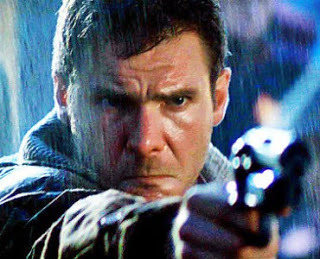 Okay, today we’re talking action thrillers: cynical, hardboiled characters embroiled in kill-or-be-killed adventures, often in hellish urban settings, and pitted against foes who are the essence of evil.
Okay, today we’re talking action thrillers: cynical, hardboiled characters embroiled in kill-or-be-killed adventures, often in hellish urban settings, and pitted against foes who are the essence of evil.
Firstly, this is because ASHES TO ASHES, the next Heck novel, will hit the shelves in precisely 45 days’ time, but also because, as I’m increasingly hearing about the sequel (due later this year) to the 1983 movie blockbuster, Blade Runner, I thought I’d go back to its original source, Philip K. Dick’s masterly sci-fi/cop thriller, DO ANDROIDS DREAM OF ELECTRIC SHEEP?, and offer a detailed review and discussion of it.
This will also, I guess, be a timely occasion for me to reprint a blog I wrote for OFF-THE-SHELF BOOKS back in October last year, when I was asked the question ‘what are your top tips for writing action sequences?’
But before we get to any of that – the Philip K. Dick article and review can be found, as usual, at the lower end of today’s post – I’m going to talk a little bit more about Heck.
ASHES TO ASHES will be published on April 6, and the reviews are starting to come in courtesy of the NetGalley folks. Thankfully, the two I’ve seen so far are both five stars.
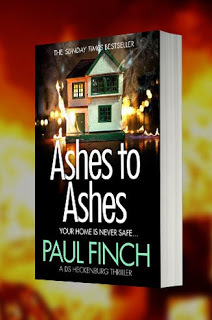 NIGELADAMSBOOKWORM
talks about the book’s readability, with the following quote:
NIGELADAMSBOOKWORM
talks about the book’s readability, with the following quote:“It’s one of those books where you keep looking for a point where you can put it down and get on with what you should be doing. In the end, I gave up and just read it straight through.”
Well, that’s certainly fine by me. When you write what you consider to be a high-energy thriller, the last thing you want is a mid-book sag, which sees readers happy to take long breaks between chapters.
The second five-star review has appeared on Goodreads courtesy of Elaine Tomasso, and okay, I’m hoping there’ll be lots of reviews on Goodreads at some point, so I post this one at the risk of seeming a little bit over-excitable. But this one is particularly interesting because it picks out a very different aspect of ASHES TO ASHES :
“Ashes to Ashes is a compulsive read with a bit of everything thrown in – action, violence, cop humour, some of Heck’s backstory and sadness as well.”
This latter reference to a melancholy backstory was music to my ears because, throughout the Heck novels thus far, we’ve seen that our hero has family issues, and though we’ve explored them superficially, we haven’t yet drilled down into the nitty-gritty.
Well … in this sixth installment, we do.
Heck, you may recall – Detective Sergeant Mark Heckenburg – originally joined the Greater Manchester Police so that he’d only have to travel 15 or so miles to work, his home being in Bradburn, a run-down coal-mining town on the border between Manchester and Lancashire. But in due course he was driven south to the Metropolitan Police in London because his family ostracised him.
At the risk of giving away a slight SPOILER for those who haven’t read any of the Heck books so far, while Heck was still at school, his older brother, Tom, a college drop-out with drugs problems, was framed by a lazy CID unit for a series of violent burglaries and received a life sentence. A month into it, after much abuse in prison, he committed suicide. Perhaps inevitably, the real culprit was apprehended only a couple of weeks later.
It was therefore to the horror of his family, that Heck himself joined the police as soon as he was old enough. Understandably, neither they nor various family friends would speak to him afterwards, eventually causing him to abandon his hometown and seek reassignment at the other end of the country.
All of this became canon in the first Heck novel, STALKERS , but what has never really been revealed, despite the efforts to find out by numerous characters in the follow-up novels, is why Heck would seemingly betray his family in this most crass and inexplicable fashion.
 Until now.
Until now.Heck is stripped to the bare bones in ASHES TO ASHES – yep, the much-publicised fire in this novel doesn’t just burn the victims of the maniac he pursues! – as everything we need to know about his early home-life is finally laid bare. But unfortunately, because I’m not going to give away SPOILERS for free all day, you’ll need to read the book to find out more.
Elaine also hits the spot with the following quote:
“The big message in the novel is the devastation caused by drugs, not just to the user but their families and to society in general … It makes for difficult reading in parts.”
That comment made me glad too. Quite often in these novels, Heck has hunted serial killers, sexual deviants, torture freaks and other homicidal madmen. But there are all kinds of evil in our modern world, some of them infinitely more subtle than these, and the scourge of drug-addiction is one with which we’re all very familiar – and so ASHES TO ASHES will hopefully strike a chord on that front too.
*
And now, on an only slightly different note, here is the article I penned for OFF-THE-SHELF BOOKS last autumn ...
What are your top tips for when it comes to writing action?
I’m honoured that my crime novels have won praise from reviewers for their action sequences. Flattering terms like ‘vivid’, ‘gut-thumping’ and ‘bone-crunching’ have all been used in recent times, so I can only assume that I’m doing something reasonably right.
It may surprise people to hear this, but one of the tricks to writing good action is to be subtle.
For real?, I hear you ask. ‘Gut-thumping’? ‘Bone-crunching’? What’s subtle about that?
What I mean is that action is most effective when used sparingly. Otherwise you risk your novel turning into a cartoon. Now, that may be what some authors are looking to achieve. But personally, I like to keep things just this side of believable. So I don’t include a fist fight or a car chase on every other page. Likewise, I try to do those other things that are important in novel-writing: evoke some mood, some atmosphere, develop plot and character, examine relationships, etc. And that’s not some attempt to be literary, it’s an attempt to create a more rounded and satisfying experience for the readers, and to prevent them becoming bored, because you can just as easily get bored with too much action as you can with too much kissing, too much chatter, etc.
Another problem with overusing action is that you consistently must raise the stakes, always needing to produce a bigger, louder sequence than the one before. You won’t need me to tell you that it isn’t long before this gets preposterous. You could finish up with the situation you had in the Bond movie, Die Another Day, which included an invisible car, a giant beam of concentrated solar energy fired from a satellite and destroying Earth’s armies, and Bond wind-surfing a tidal wave.
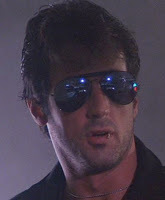
 Even trying to keep things grounded sometimes isn’t enough. You only need to look back at some of the 1980s action extravaganzas, the Schwarzenegger and Stallone movies, which were basic cop movies in concept, but often morphed into blizzards of gunfire from beginning to end, with soaring body-counts and heroes who were completely invincible.
Even trying to keep things grounded sometimes isn’t enough. You only need to look back at some of the 1980s action extravaganzas, the Schwarzenegger and Stallone movies, which were basic cop movies in concept, but often morphed into blizzards of gunfire from beginning to end, with soaring body-counts and heroes who were completely invincible.And that’s another thing.
Unless you’re setting out to write about superheroes, remember that the more vulnerable your lead character is going to be, the more effective he/she is. To have weaknesses is human – it’s a recognisable and even likeable trait in fiction. So if you portray them walking through storms of bullets without getting hurt, or dispatching every opponent with ridiculous ease … why would anything else your reader sees them encounter be deemed a threat?
How will he/she empathise with them? All tension and suspense is lost.
These are the most important tips I can offer with regard to action sequences. Don’t overuse them and don’t overcook them. Less is always more, and remember that in the real world violence has consequences. Even if your heroes emerge from the battle unscathed, they are not going to be unshaken.
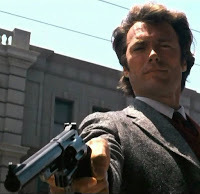 There may also be legal ramifications, especially if your hero is a cop. Okay, it’s a built-in given with police thriller fiction that the central character tends to be on the side of right and therefore, almost whatever he/she does will end up being approved. But I once read a very interesting quote from a senior San Francisco police officer, who, after it was drawn to his attention that in the five Dirty Harry movies, Callahan’s kill-count was somewhere in the 40s or 50s, commented that no serving officer with such a record could expect to keep his job or even his liberty.
There may also be legal ramifications, especially if your hero is a cop. Okay, it’s a built-in given with police thriller fiction that the central character tends to be on the side of right and therefore, almost whatever he/she does will end up being approved. But I once read a very interesting quote from a senior San Francisco police officer, who, after it was drawn to his attention that in the five Dirty Harry movies, Callahan’s kill-count was somewhere in the 40s or 50s, commented that no serving officer with such a record could expect to keep his job or even his liberty.Obviously, we’re often dealing with life and death situations in our novels, but the legal structure of the free world is important, so we at least have to pay a degree of lip-service towards that.
All that said, if you use them judiciously, your action sequences can still be among the highlights of your book. For this reason, I myself find them the most demanding scenes to write, because they need to be bang-on.
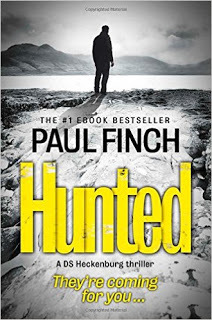 One case in point was a car chase across South London in my fifth Heckenburg novel,
HUNTED
. It was described by one reviewer as ‘the mother of all car-chases’, which made me happy, because though it only occupied two pages of the novel, it had taken me two whole weeks to construct it. First of all, I’d wanted to get it correct geographically. This involved plotting it on a map and taking advice from London traffic officers. I also drove the route to see if such a chase was technically possible. And while the actual writing might have been done in a day, it then needed to be very tightly edited. It isn’t a rule of law, but I always find it gives you a quicker read if you use shorter, punchier sentences. So whatever you do, don’t meander – get to the point of each sentence immediately. This will energise the entire passage.
One case in point was a car chase across South London in my fifth Heckenburg novel,
HUNTED
. It was described by one reviewer as ‘the mother of all car-chases’, which made me happy, because though it only occupied two pages of the novel, it had taken me two whole weeks to construct it. First of all, I’d wanted to get it correct geographically. This involved plotting it on a map and taking advice from London traffic officers. I also drove the route to see if such a chase was technically possible. And while the actual writing might have been done in a day, it then needed to be very tightly edited. It isn’t a rule of law, but I always find it gives you a quicker read if you use shorter, punchier sentences. So whatever you do, don’t meander – get to the point of each sentence immediately. This will energise the entire passage. Also, remember that the quality of an action sequence is not just a piece of narrative: ‘he said, she said, this is what happened next …’ It works much better when it’s a genuine assault on the senses. Any kind of pursuit or combat situation can be overwhelming for those involved. You’ve got to think how it looks to be in the midst of this terrible danger, how it sounds, how it smells: a chaos of flickering ‘jumping jack’ images, the mingled stenches of sweat, blood, oil, the crump of splintering metal, the explosion of shattering glass, the deafening bangs as speeding cars rebound from one another, etc.
All of this can make it a vivid experience for your audience, who I try to involve as much as I possibly can. If you can make your reader feel that he/she is the one being put through the mangle, not your hero, then that is one sure way to make them flip through those pages in a blur of speed.
*
THRILLERS, CHILLERS, SHOCKERS AND KILLERS
An ongoing series of reviews of dark fiction (crime, thriller and horror novels) – both old and new – that I have recently read and enjoyed. I’ll endeavour to keep the SPOILERS to a minimum; there will certainly be no given-away denouements or exposed twists-in-the-tail, but by the definition of the word ‘review’, I’m going to be talking about these books in more than just thumbnail detail, extolling the aspects that I particularly enjoyed … so I guess if you’d rather not know anything at all about these pieces of work in advance of reading them yourself, then these particular posts will not be your thing.
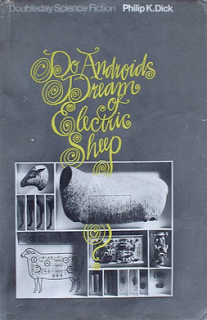 DO ANDROIDS DREAM OF ELECTRIC SHEEP?
DO ANDROIDS DREAM OF ELECTRIC SHEEP? by Philip K. Dick (1968)
The world of 1992 (or 2021 in later reprints) is a nightmare of ruined cities and desolate wildernesses. In the wake of World War Terminus, Earth has largely been depopulated. Those who weren’t killed in the conflict have either abandoned their homes for colonies off-world or are now slowly dying from the toxic dust that permeates the atmosphere. A parody of the human consumer lifestyle continues, those remaining working normal jobs (though very few of these are high-powered), living in apartment buildings (which otherwise are largely empty) and watching television (even though there is only one channel, run by the megalomaniac oddball, Buster Friendly). Everyone is so depressed that they need their ‘Penfield mood organs’ to try and uplift their spirits.
It is a blighted, despair-laden scene, in which the only light is ‘Mercerism’, the worship of Wilbur Mercer, a semi-mythical Christ-like figure, who when humans commune telepathically by means of their ‘empathy boxes’, they envision ascending a steep, rugged slope, at the top of which he is martyred by being stoned to death, leading all those tuned-in to reach a transcendental state.
Even the ‘specials’ and the ‘chickenheads’ find hope in Mercerism, the former because, having been sterilised by the radioactive fall-out, they are considered useless to the human race and thus are prohibited from emigrating off-world, and the latter because, having suffered brain damage, they can perform only the most menial tasks and are subsequently treated with contempt.
Rick Deckard, a bounty hunter employed by the San Francisco police, often wonders why he hasn’t left Earth by now. His wife, Iran, is more depressed than most – so much so that she can barely even rise in the morning, while Deckard himself struggles with his conscience. The police mainly use him to ‘retire andys’, which in a nutshell means hunt down and, by use of a controversial empathy test, the Voigt-Kampff, identify rogue members of the android slave race developed to aid human expansion into the off-world colonies, and then kill them.
Deckard’s problem is that the androids are in many ways like humans; they were biologically-grown rather than constructed, and though they are short-lived (designed to cease functioning after four years), they are excellent physical specimens, particularly the new, improved model, the Nexus-6. When androids go ‘rogue’ it basically means they have come to Earth, which is strictly forbidden; they don’t necessarily need to have committed a crime. Increasingly Deckard finds it difficult to retire these thinking, reasoning beings, though he does agree that they lack the all-important empathy, which means they have no concept of human kindness, even if they are increasingly adept at concealing this.
Despite his doubts, Deckard is good at his job and earns decent money. One day he hopes to be able to dispense with his pet electric sheep, and buy a real animal. Because one other aspect of the tragicomic existence mankind has descended into is that, with animals so rare, their ownership has now become a status symbol. Anyone who is anyone owns an animal of some sort, and zealously shows it off, though only at immense cost. In this regard, Deckard’s lucky day finally seems to arrive when he is summoned to police HQ and advised that a senior bounty hunter has been badly injured by a particularly dangerous group of Nexus-6 androids, who are newly arrived on Earth. Their leader is the ruthlessly intelligent Roy Baty, who, unable to stand his servile status any longer, has led a miniature rebellion on Mars, which has cost several human lives. If Deckard can retire all six, it will earn him a fortune. But it soon becomes apparent that this won’t be easy.
To start with, enquiries at the central offices of the Rosen Association in Seattle, the corporation responsible for manufacture of the androids, brings him into contact with the alluring Rachael Rosen, whom he finds incredibly attractive – only for him to apply the empathy test to her, and discover that she too is an andy, which confuses him even more with his chosen role.
Meanwhile, the fugitive Nexus-6 have been blending in on Earth. Some successfully impersonate humans, even Deckard’s fellow cops, while another becomes a beautiful opera singer and gains immediate respectability. At the same time, several of those Deckard has targeted, Roy Baty included, are given refuge by the deluded chickenhead, John Isidore, who is both in awe of their perfection and terrified of their heartlessness. If this doesn’t make it difficult enough for Deckard, he is further hampered by Rachael, who, in a mysterious gesture (though she seems to be genuinely attracted to the lonely, world-weary bounty hunter), offers to help him catch the renegade band. Despite being one herself, Rachael expresses a conviction that there is no place for the Nexus-6 on Earth. But Deckard has been an investigator for a long time, and even though he eventually falls into bed with her – because she is the ultimate femme fatale! – he is never sure that he can trust her …
Almost everyone thinks they know the story of Do Androids Dream of Electric Sheep? because they have seen the epic movie version, Blade Runner , made by Ridley Scott in 1983. In truth, there are significant differences between the two narratives, though overall, the subtexts themselves are not hugely dissimilar.
But first things first; the book.
The late Philip K. Dick, while never a great literary stylist, was regarded throughout his life as one of sci-fi’s great visionaries. Famous for his obsessions with decaying worlds at the mercy of dictatorships and corporations, for the human metaphysical experience, for altered states, theology, drug abuse and insanity, the post-apocalyptic hell-scape he creates in Do Androids Dream of Electric Sheep? is really one of the most vivid and terrifying ever envisaged simply because it is literally a land without hope. Everything alive is slowly dying; everything that isn’t alive is turning to ‘kipple’ (rubbish). Even off-world in the colonies, we are told that things are only marginally better.
For all these reasons, this book is a hard read. There are moments of wild comedy, for instance Deckard’s burning aspiration to ascend to a level in society wherein he can actually be the proud owner of a goat. But the tone is always bitter-sweet, and ultimately that’s the atmosphere all the way through. Do Androids Dream of Electric Sheep? is a tale of loss rather than a cop-thriller. Fans of the movie who have never read the book may be expecting a neo-noir, with the weary, overcoated Deckard working his way along the seamy streets like a latter-day Philip Marlowe, and indulging in regular, furious gun-battles with his bear-invincible foes. There is a touch of that, particularly towards the end of the novel, but it isn’t a keystone of the story; for example, at no stage in the book do we encounter the term ‘Blade Runner police’.
Even the androids, who are never referred to as ‘replicants’ or ‘skinjobs’ are nowhere near as deadly as they were in the film. They are not a military caste. Roy Baty, the most dangerous of them, trained as a chemist while on Mars. Though this isn’t to say the menace isn’t present. It very much is, particularly as we approach the climax of the novel – especially when the seductive and intriguing Rachael Rosen injects herself more fully into the story – but again, it was never Dick’s overarching purpose to create an actioner.
Throughout the book, he is more interested in examining issues of individuality, self-perception and what it actually means to be empathetic. For example, the remnants of humanity we encounter all value their individuality, but though it eases their misery, the more they commune with Wilbur Mercer (and each other of course), the less individual they become; they even use technology to impose fake emotions on themselves. At the same time, it doesn’t escape Deckard’s notice that, by the end of the novel, the supposedly soulless androids are empathising with each other, and that he himself has begun to empathise with one of them.
Other issues, which back in 1968 were certainly relevant but must also have seemed like pure science-fiction, are now glaringly current in the 21st century: two examples being Man’s irrational stewardship of the Earth – it’s a deep irony that the bounty hunters are hired to kill relentlessly in a time and place when the real problem is that everything is already dying; and then the whole argument surrounding artificial life, its purpose and development, and the moral (not to mention potentially real-world) ramifications of enslaving it.
While it’s no great piece of literature, this deluge of thought-provoking ideas means that Do Androids Dream of Electric Sheep? is these days regarded as a sci-fi masterwork. Some of its essential ingredients are visible in the movie of course, but anyone picking this book up and looking for a ‘novelisation of the film’ is likely to be disappointed.
We regularly end these book reviews with me rather presumptuously selecting the cast I would recruit if the narrative was ever to make it to the TV or cinema. Well … it’s all been done already. Blade Runner may be a very different beast from Do Androids Dream of Electric Sheep?, but it’s close enough (and a great enough movie, in my view – whichever version of it you prefer) to render any further remakes obsolete.
Most of the images used in the column today speak for themselves, but I would like to thank Wikipedia for the original DO ANDROIDS DREAM OF ELECTRIC SHEEP? first-edition cover as produced by Doubleday.
Published on February 21, 2017 00:54



